The 86th meeting of the 3D Furum
The University of Electro-Communications, Tokyo, Japan
November 22, 2008
Program of the meeting (in Japanese)
A new type of the optimized Fraser-Wilcox illusions in a 3D-like 2D image with highlight or shade
since November 18, 2008 Abstract
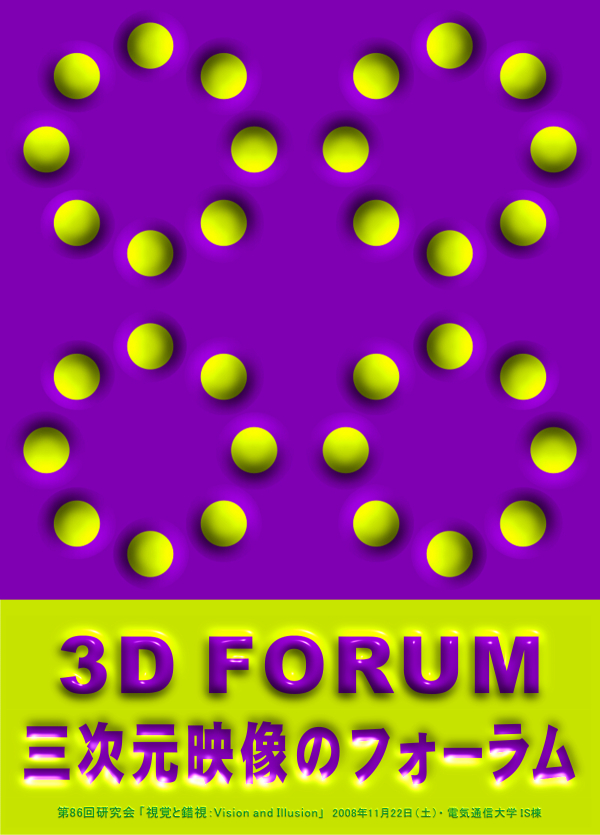
"3D Forum 2008"
Rings appear to rotate.
Copyright Akiyoshi Kitaoka 2008 (November 18)
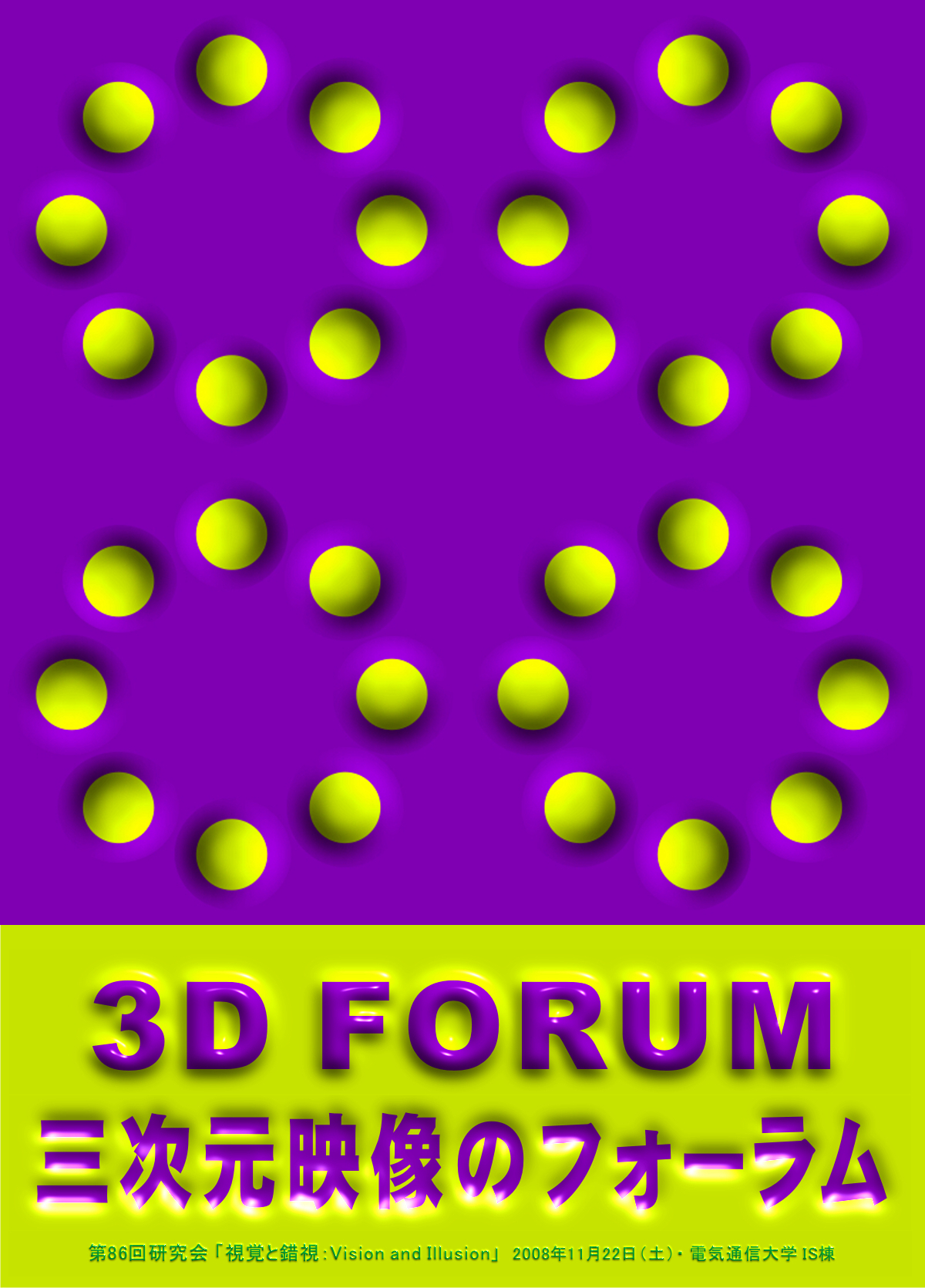
Optimized Fraser-Wilcox illusions
| Type | Basic illusion that motion direction is from dark to light |
Basic illusion that motion direction is from light to dark |
Examples (click the thumbnail) |
| 0 | 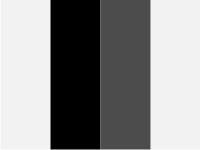 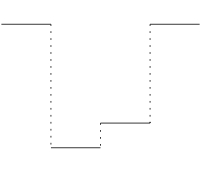 Luminance profile |
 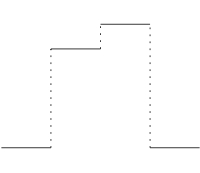 |
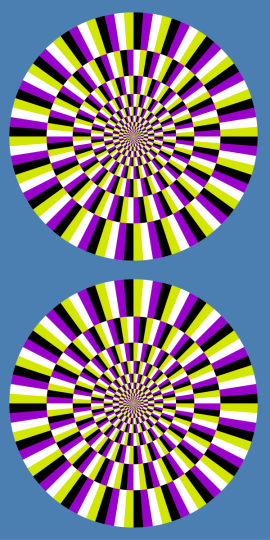 |
 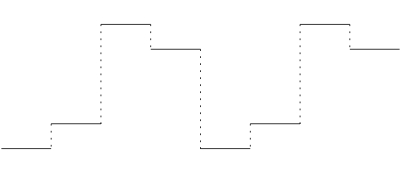 |
|||
Kitaoka, A. and Ashida, H. (2003) Phenomenal characteristics of the peripheral drift illusion. VISION (Journal of the Vision Society of Japan), 15, 261-262. PDF
| Type | Basic illusion that motion direction is from dark to light |
Basic illusion that motion direction is from light to dark |
Examples (click the thumbnail) |
| I | 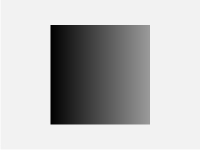 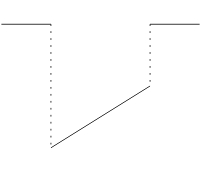 |
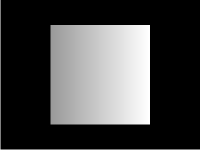 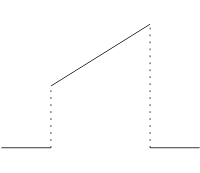 |
|
| IIa |  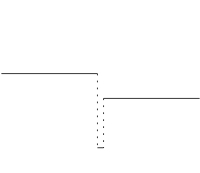 |
 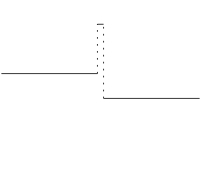 |
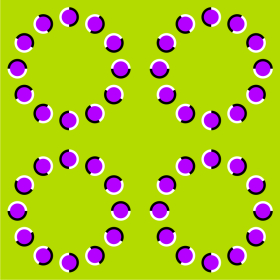 |
| IIb |  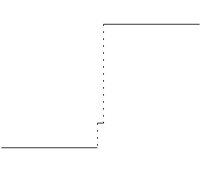 |
 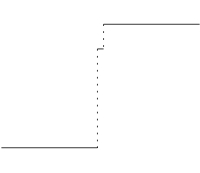 |
|
| III |  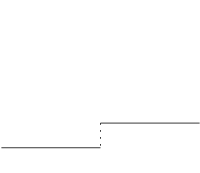 |
 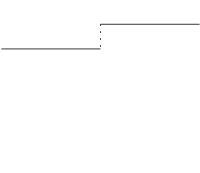 |
|
| IV new! |
 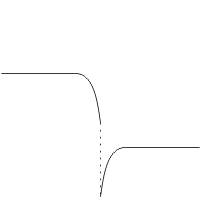 |
 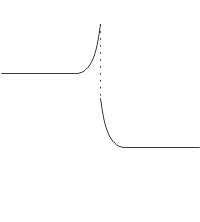 |
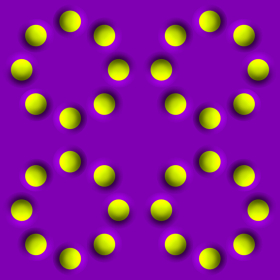 |
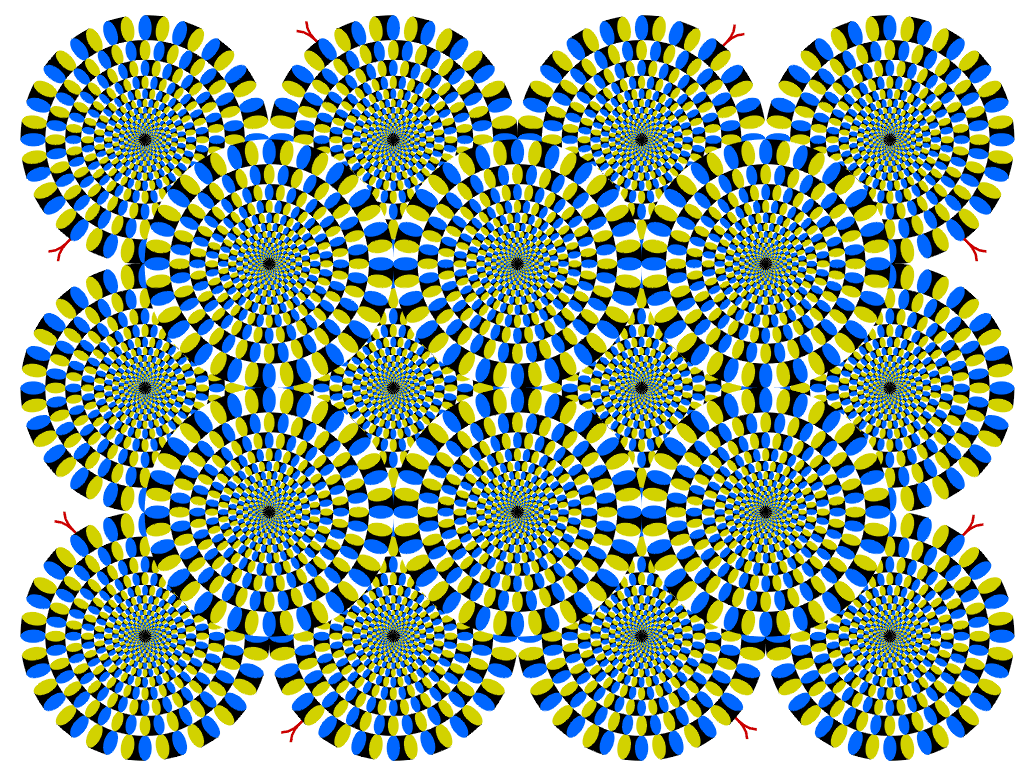
"Rotating snakes"
Circular snakes appear to rotate 'spontaneously'.
Copyright A.Kitaoka 2003 (September 2, 2003)
1. Fraser and Wilcox (1979)
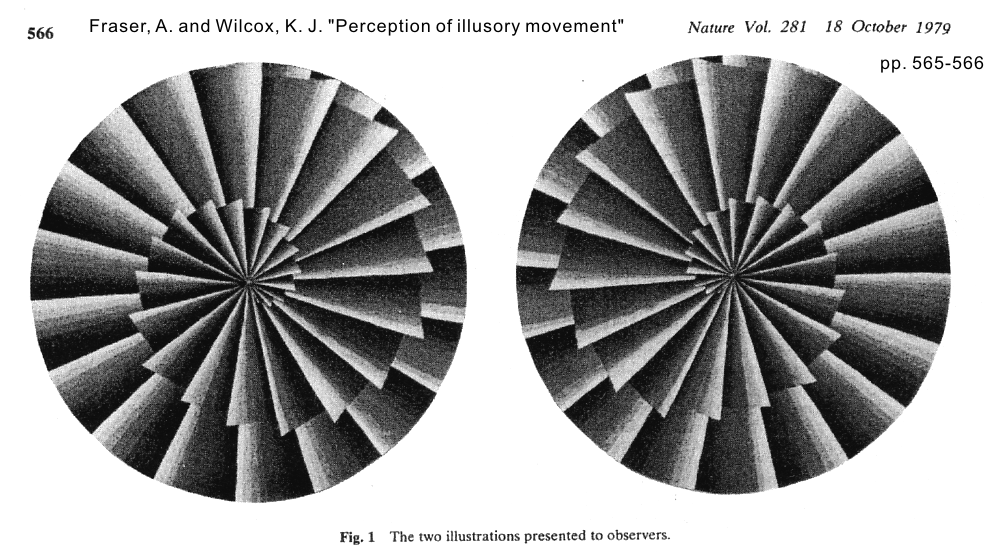
Fraser, A. and Wilcox, K. J. (1979) Perception of illusory movement. Nature, 281, 565-566.
2. Faubert and Herbert (1999)
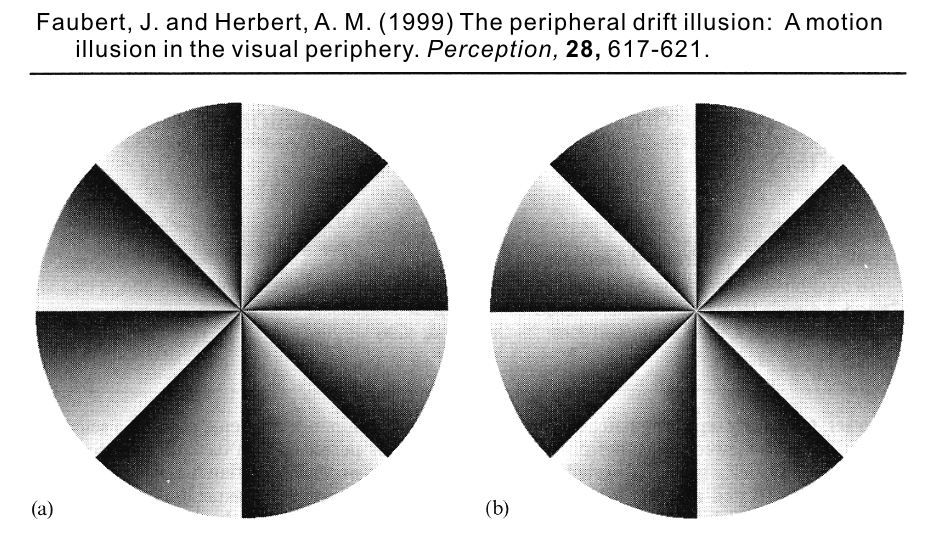
Faubert, J. and Herbert, A. M. (1999) The peripheral drift illusion: A motion illusion in the visual periphery. Perception, 28, 617-621.
3. Naor-Raz and Sekuler (2000)
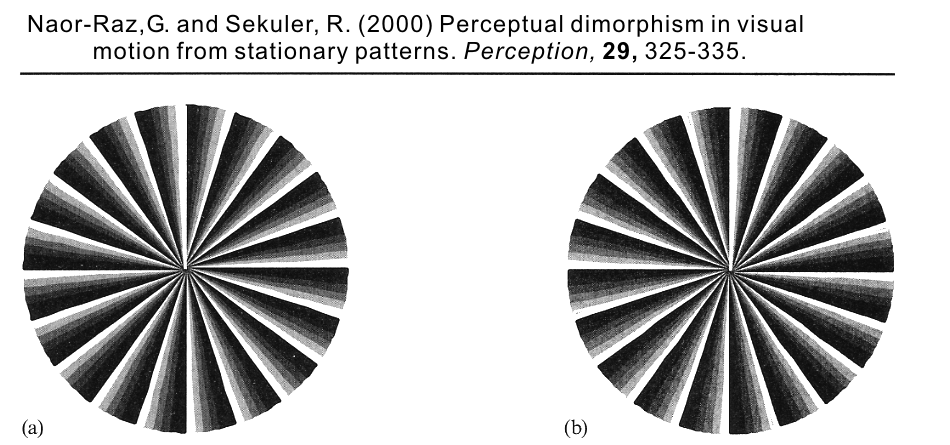
Naor-Raz, G. and Sekuler, R. (2000) Perceptual dimorphism in visual motion from stationary patterns. Perception, 29, 325-335.
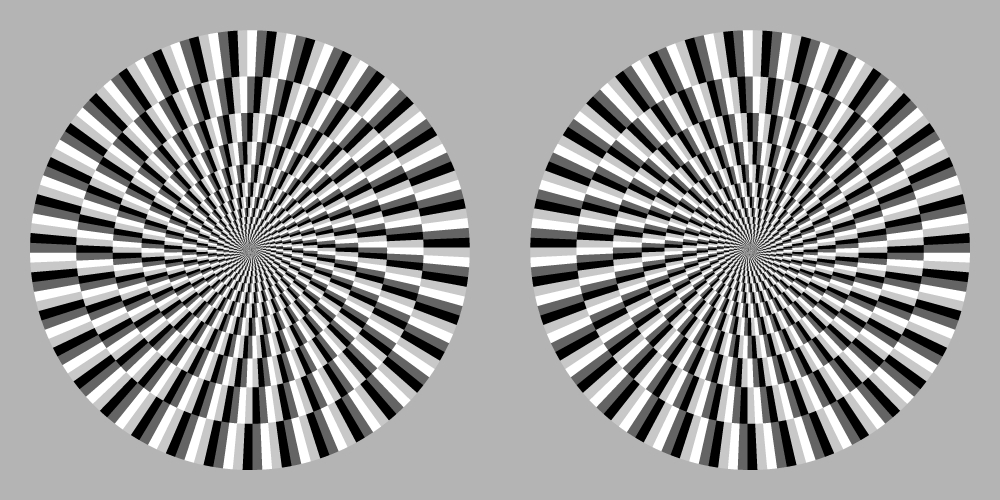
Kitaoka, A. and Ashida, H. (2003) Phenomenal characteristics of the peripheral drift illusion. VISION (Journal of the Vision Society of Japan), 15, 261-262
5. Following papers or articles
Kuriki, I., Ashida, H., Murakami, I. and Kitaoka, A. (forthcoming) Functional brain imaging of the Rotating Snakes illusion by fMRI. Journal of Vision, in press new!
Hisakata, R. and Murakami, I. (2008) The effects of eccentricity and retinal illuminance on the illusory motion seen in a stationary luminance gradient. Vision Research, 49, 1940-1948.
Chi, M-T., Lee, T-Y., Qu, Y., and Wong, T-T. (2008) Self-Animating Images: Illusory Motion Using Repeated Asymmetric Patterns. ACM Transaction on Graphics (Proceedings of SIGGRAPH 2008), 27, No.3. SIGGRAPH2008 --- Authors' page --- PDF (SIGGRAPH)
Scientific American Reports Special Edition on Perception (2008). ![]()
Kitaoka, A. and Ashida, H. (2007) A variant of the anomalous motion illusion
based upon contrast and visual latency. Perception, 36, 1019-1035. ![]() PDF request to Akiyoshi Kitaoka
PDF request to Akiyoshi Kitaoka
Newton Press (Ed.), A. Kitaoka (Supervisor)
(2007) Newton magazine book: Special
issue "How is the brain deceived? Perfect demonstration of visual
illusions" Tokyo: Newton Press (in Japanese; published in October 2007). ![]()
Ramachandran, V. S. and Rogers-Ramachandran, D. (2007) A Moving Experience: How the eyes can see movement where it does not exist. Scientific American Mind, February/March, 14-16.
Kitaoka, A. (2007) Phenomenal classification of the “optimized” Fraser-Wilcox
illusion and the effect of color. Poster presentation in DemoNight, VSS2007,
GWiz, Sarasota, Florida, USA, May 14, 2007. 
Murakami, I., Kitaoka, A. and Ashida, H. (2006)
A positive correlation between fixation instability and the strength of illusory
motion in a static display. Vision Research, 46, 2421-2431. ![]() PDF request
should be sent to Dr. Murakami
PDF request
should be sent to Dr. Murakami
Kitaoka, A. (2006) Anomalous motion illusion and stereopsis. Journal of Three Dimensional Images (Japan), 20, 9-14. PDF (manuscript but the same as the printed one)
Kanazawa, S., Kitaoka, A. and Yamaguchi, M. K. (2006) Infants see the “Rotating Snake” illusion. Dorsal and ventral streams in the visual system (Talk): Monday, 21 August 2006; 12:00-12:30 (29th European Conference on Visual Perception, St-Petersburg, Russia, 20th-25th August, 2006) Abstract
Kitaoka, A., Ashida, H., and Murakami, I. (2005) Does the peripheral drift illusion generate illusory motion in depth? Journal of Three Dimensional Images (Tokyo), 19, 6-8. PDF (scanned copy) (poor quality) --- MS-Word file (manuscript, the same as the paper) (high quality)
Conway, R. B., Kitaoka, A., Yazdanbakhsh, A., Pack, C. C., and Livingstone,
M. S. (2005) Neural basis for a powerful static motion illusion. Journal of Neuroscience, 25, 5651-5656. ![]() PDF request should be sent to Dr. Conway
PDF request should be sent to Dr. Conway
Backus, B. T. and Oruç, I. (2005) Illusory motion from change over time in the response to contrast and luminance. Journal of Vision, 5, 1055-1069. http://journalofvision.org/5/11/10/
Ben sent me a T-shirt. <May 30, 2008>
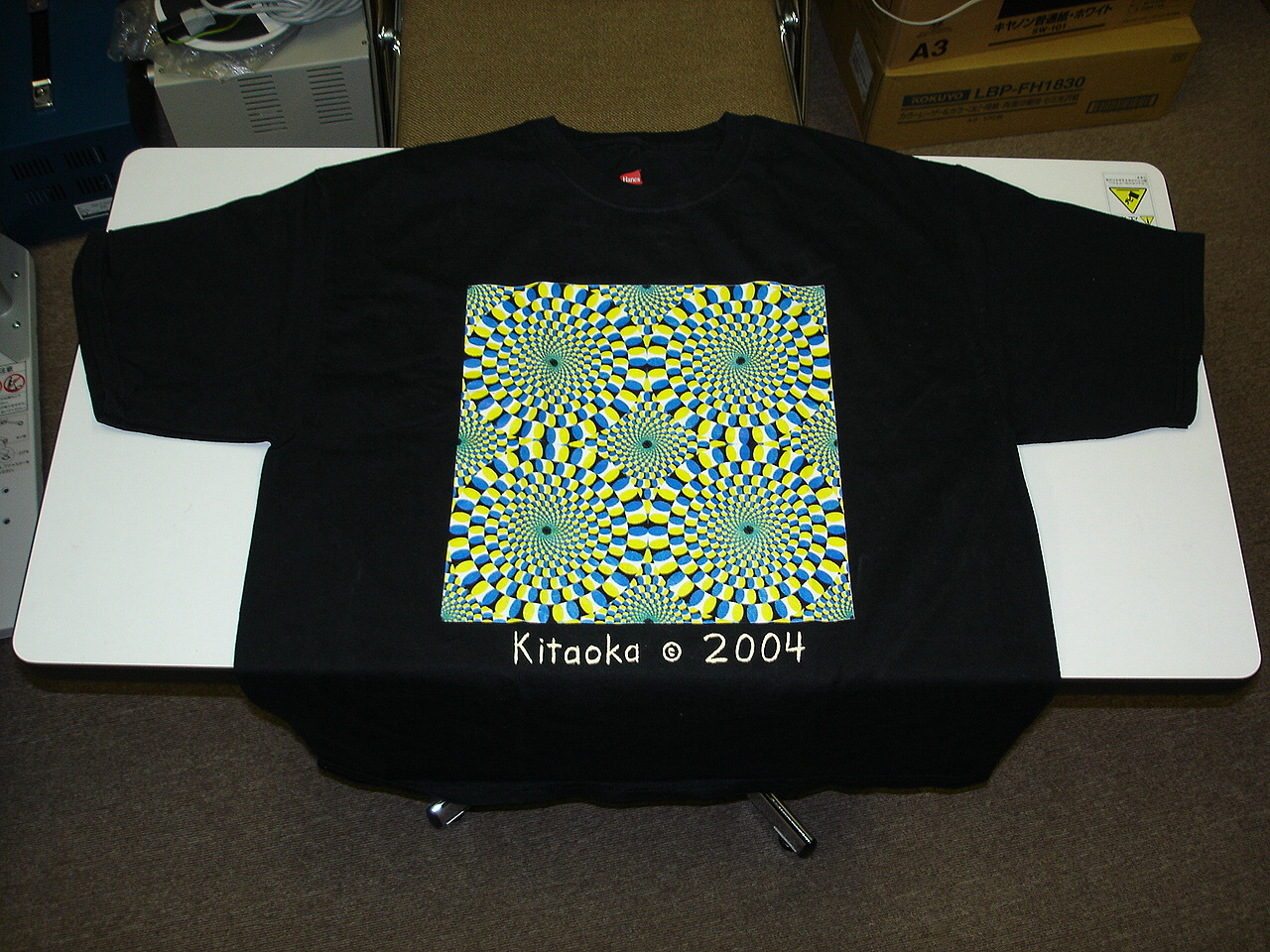
("2003" is correct.)
Actually Irealized this illusion in a design for a Happy New Year card.
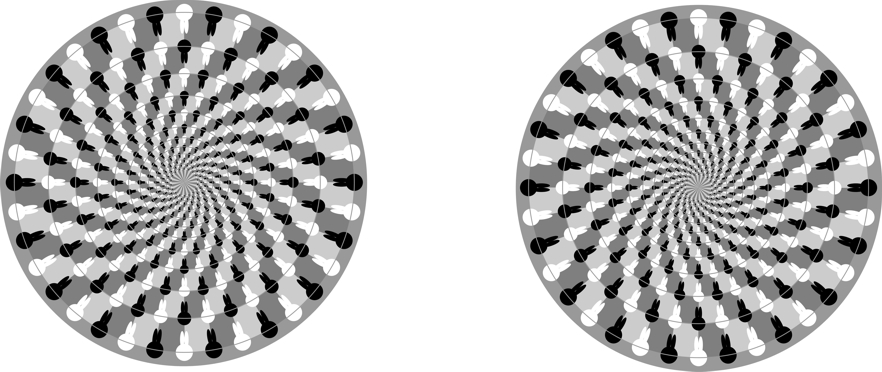
"U-zu"
(A remake)
Rings appear to rotate. This image was originally developed for the spiral illusion, in which the concentric gray lines appear to be a spiral. My nengajo
Copyright A.Kitaoka 2005 (May 23)
| 0 |   Luminance profile |
  |
 |
  |
|||
Kitaoka, A. and Ashida, H. (2003) Phenomenal characteristics of the peripheral drift illusion. VISION (Journal of the Vision Society of Japan), 15, 261-262. PDF
I explain the perceptual dimorphism in motion direction as assuming that two independent illusions are involved in the original Fraser-Wilcox illusion.
| Type | Basic illusion that motion direction is from dark to light |
Basic illusion that motion direction is from light to dark |
Examples (click the thumbnail) |
| I |   |
  |
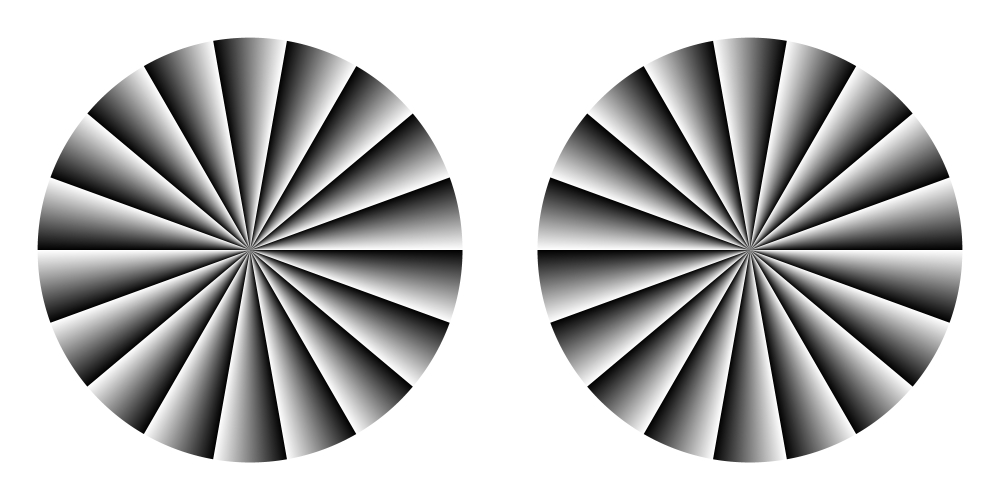
"Dark to light" (in gradation) might be stronger.
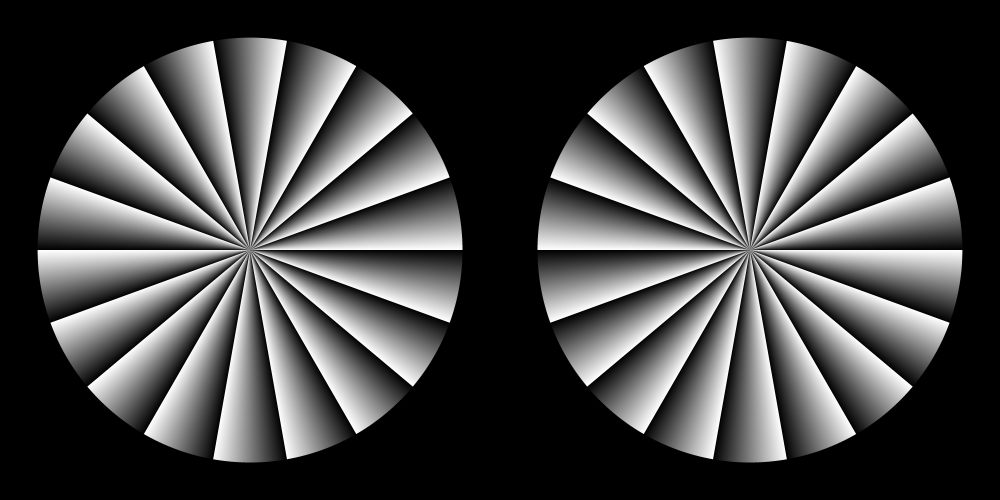
"Light to dark" might be stronger.
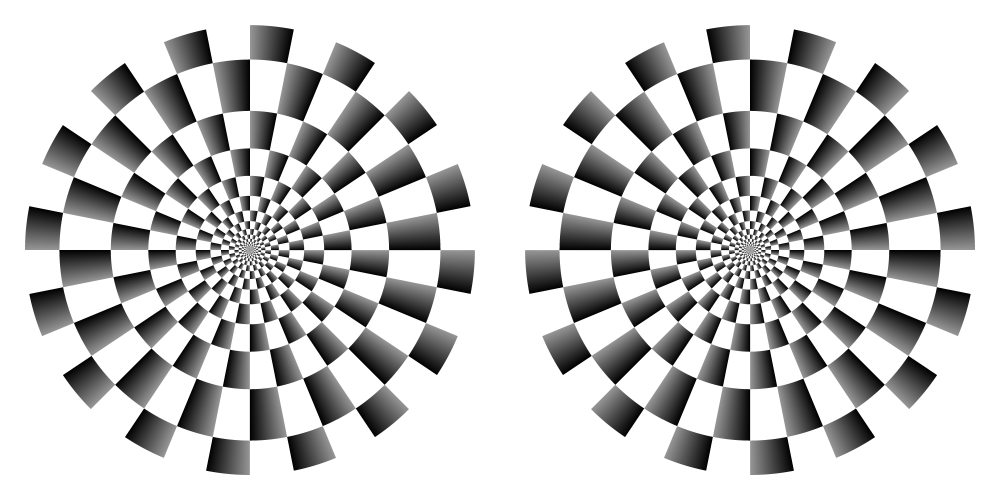
"Dark to light"
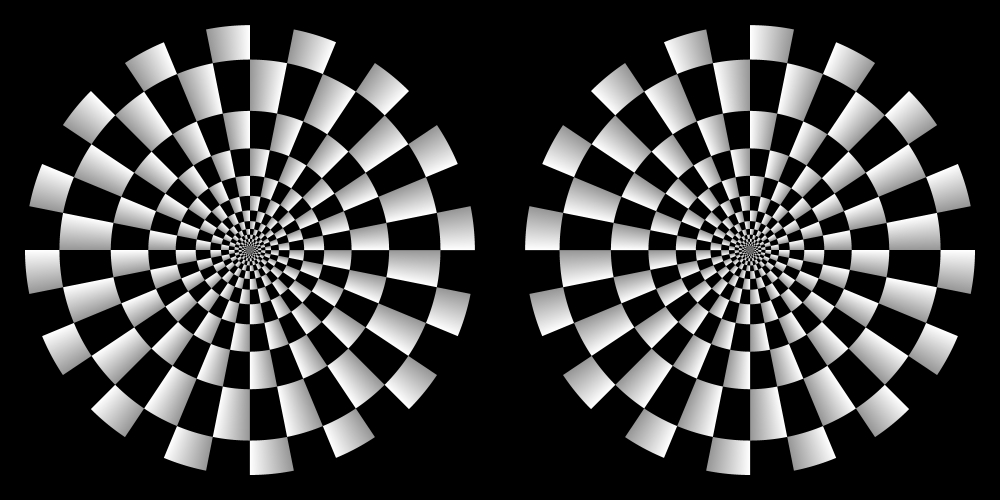
"Light to dark"
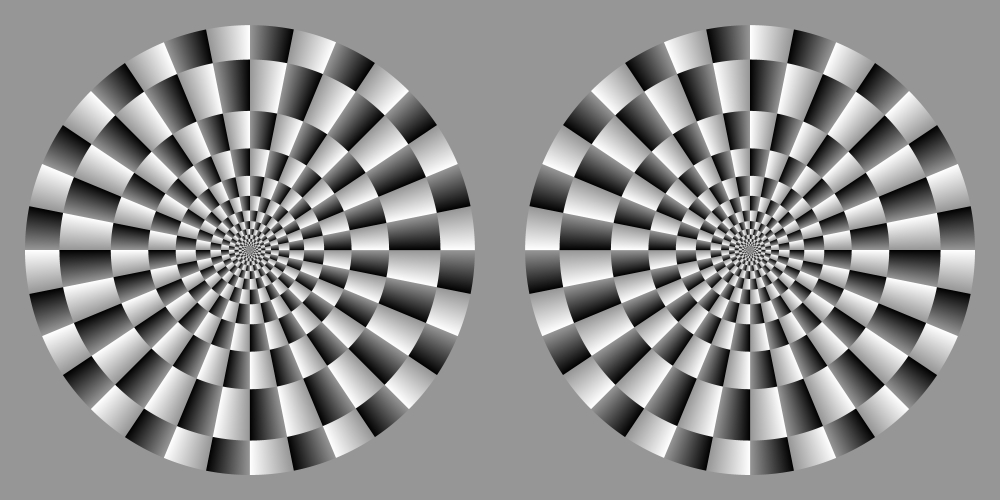
"Dark to light" and "light to dark" in cooperation
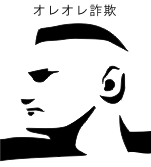 I propose an empirical observation that color might enhance the illusion
in some conditions.
I propose an empirical observation that color might enhance the illusion
in some conditions.
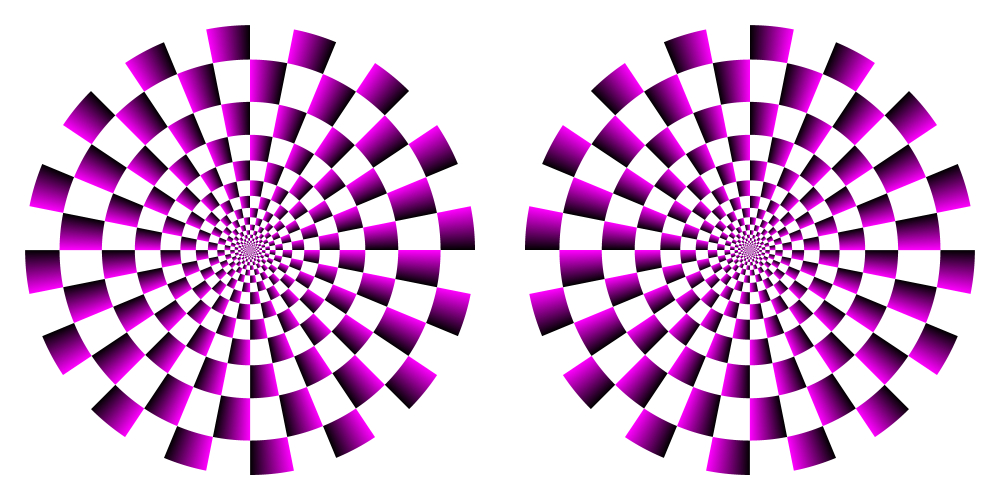
Observation 1. The illusion from dark to light is enhanced by red or blue.
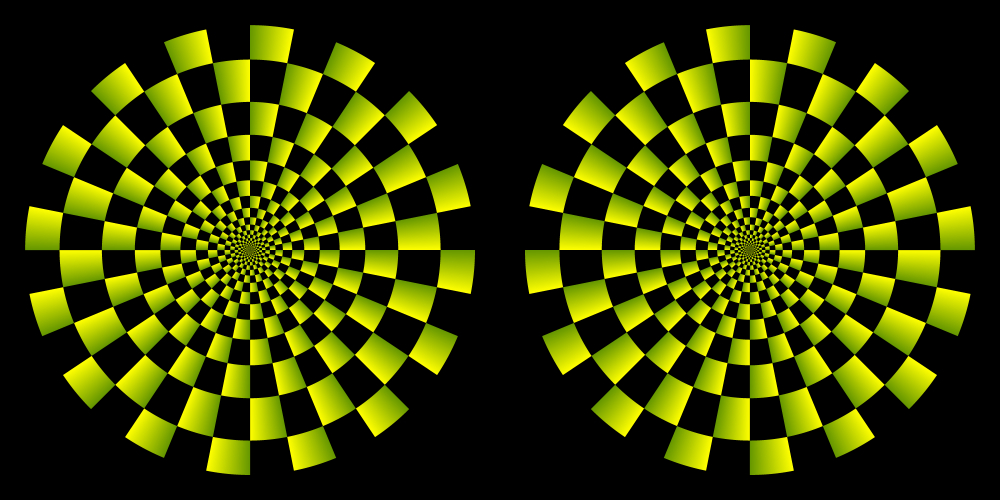
Observation 2. The illusion from light to dark is enhanced by yellow or green.
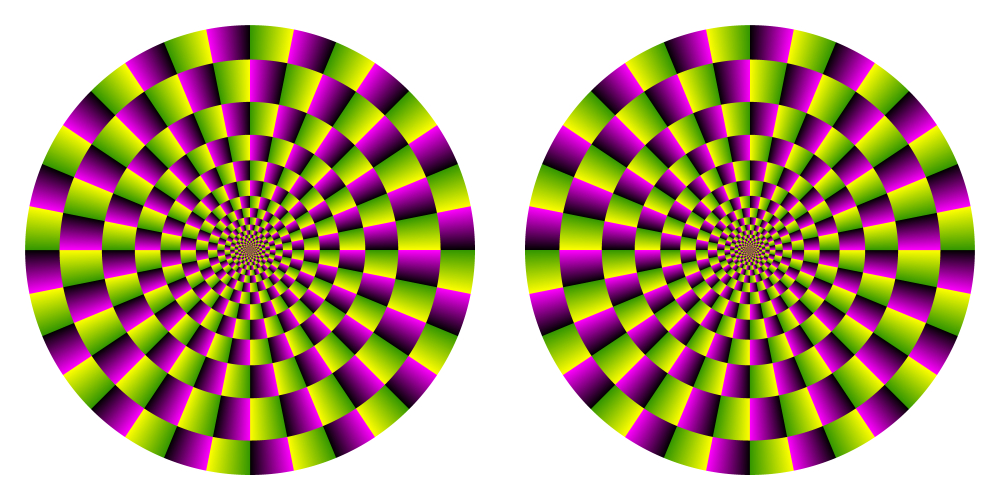
Observation 3. The illusion from dark to light is enhanced by red or blue, while the illusion from light to dark is enhanced by yellow or green. Both illusions work additively.
A work "U-zu-maki" I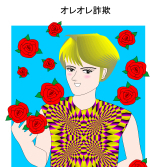 created in 2003's spring got so popular on Internet that I produced "Rotating
snakes" in 2003's autumn.
created in 2003's spring got so popular on Internet that I produced "Rotating
snakes" in 2003's autumn.
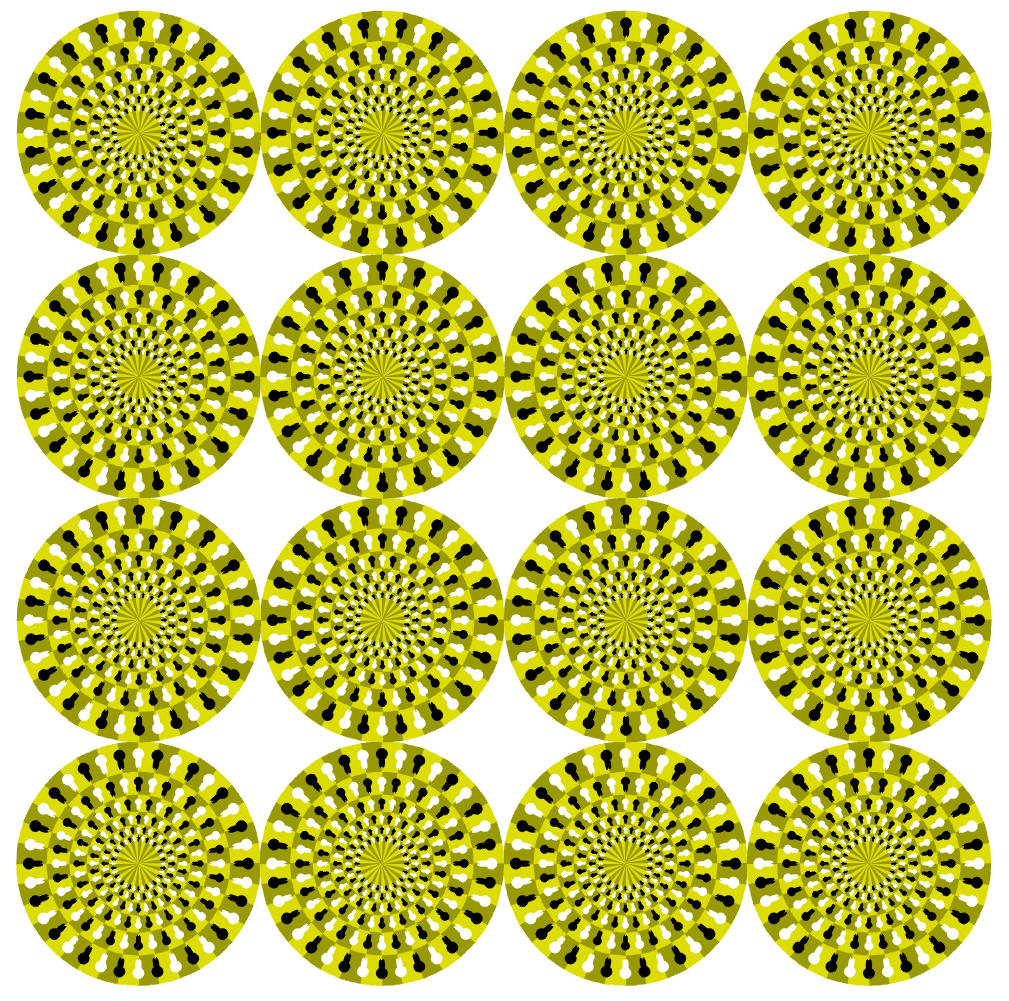
"U-zu-maki"
"U" means rabbits, "zu" means "figure", "maki" means rotation, and "Uzumaki" means spirals or swirls. Yellow represents the color of the moon in Japan and it is imagined (though not seriously) that rabbits live in the moon and make mochi (food made from rice).
Copyright
A.Kitaoka 2003
(c)Akiyoshi Kitaoka "Trick eyes 2"
Tokyo: KANZEN 2003
"Trick Eyes" and "Trick Eyes 2"
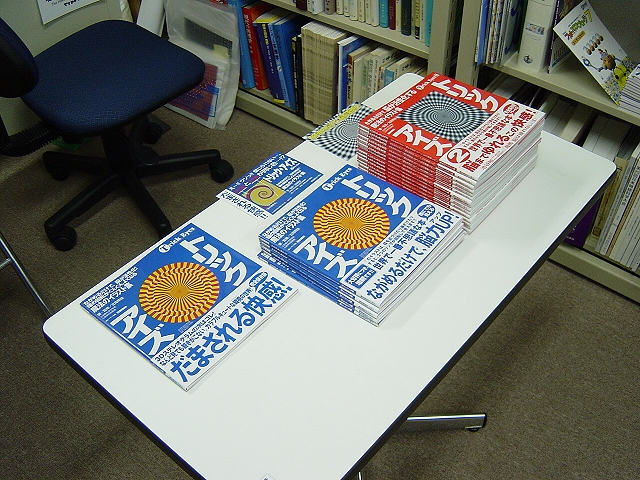
The back covers of "Trick Eyes" and "Trick Eyes 2"
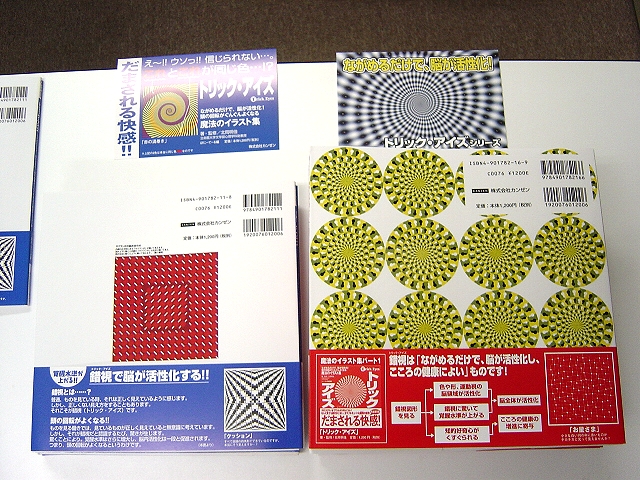

"Rotating snakes"
Circular snakes appear to rotate 'spontaneously'.
Copyright A.Kitaoka 2003 (September 2, 2003)
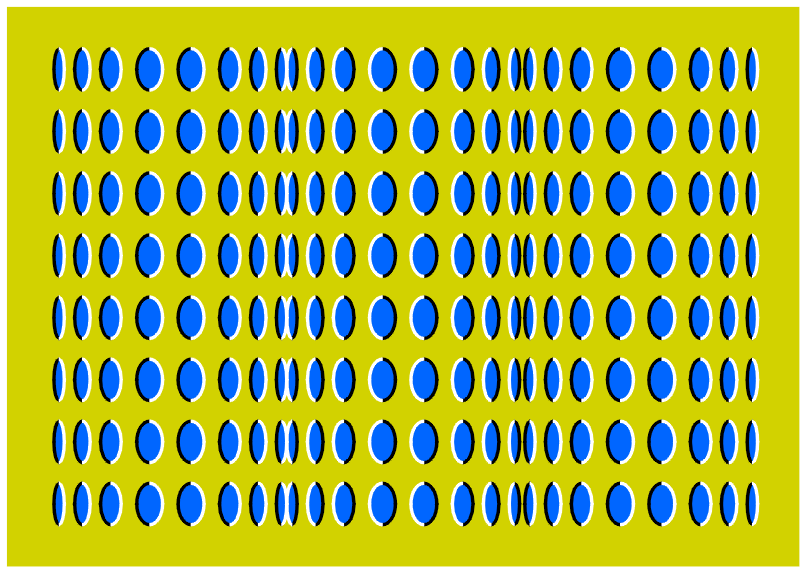
"Rollers"
Rollers appear to rotate without effort. On the other hand, they appear to rotate in the opposite direction when observers see this image keeping blinking.
Copyright A.Kitaoka 2004 (April 20)
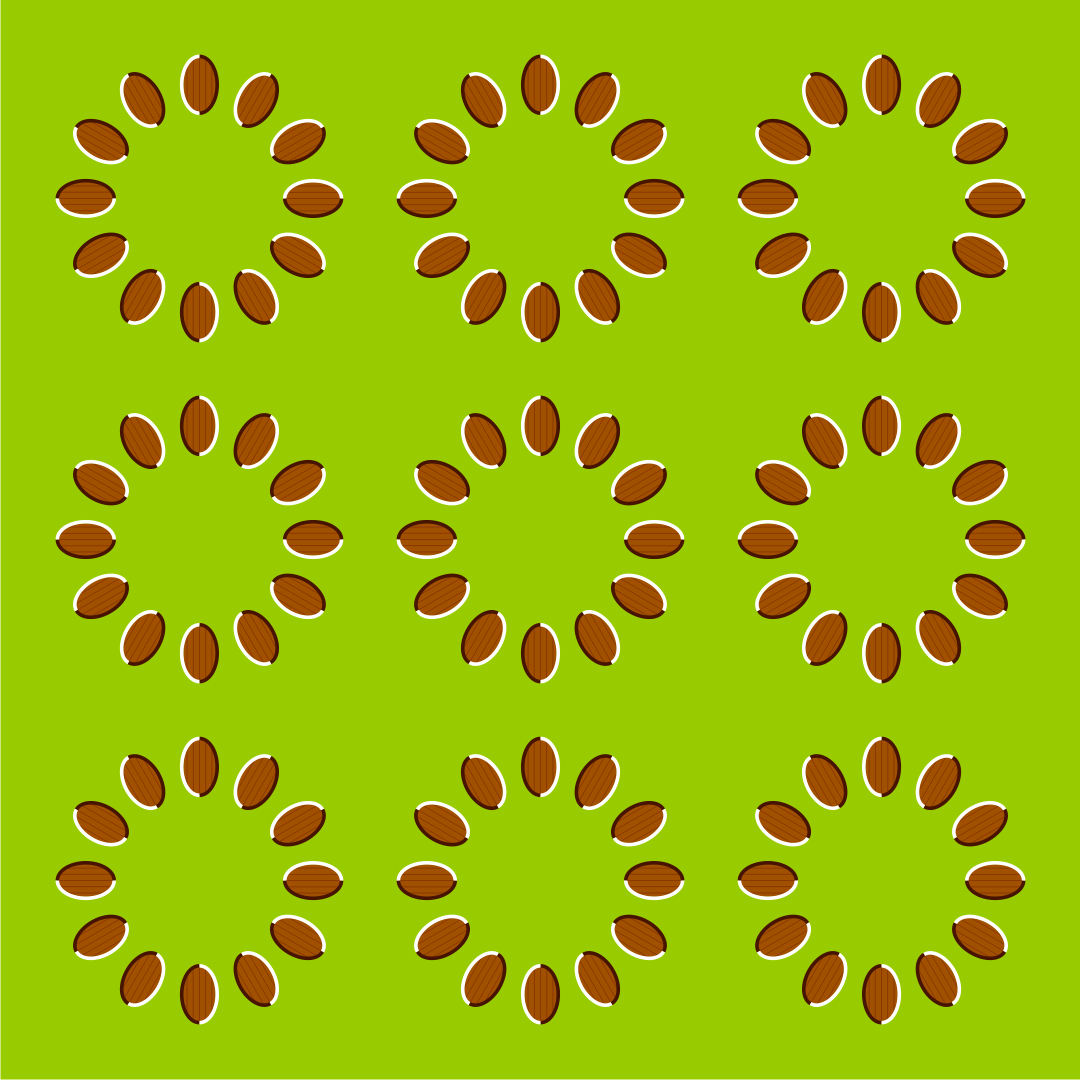
"Dongururin"*
*Rotation of donguri (acorns). "Gururin" means rotation.
Rings of donguri appear to rotate.
Copyright A.Kitaoka 2003 (July 3, 2003)
| Type | Basic illusion that motion direction is from dark to light |
Basic illusion that motion direction is from light to dark |
Examples (click the thumbnail) |
| IIa |   |
  |
 |
Here I  realized a similarity in stimulus configuration between Type IIa and reverse phi (or Gregory and Heard's (1983) phenomenal phenomena), and I made Type IIb to match Anstis and Rogers' (1975) "phi movement".
realized a similarity in stimulus configuration between Type IIa and reverse phi (or Gregory and Heard's (1983) phenomenal phenomena), and I made Type IIb to match Anstis and Rogers' (1975) "phi movement".
Reverse phi
Anstis S M, 1970 "Phi movement as a subtraction process" Vision Research 10 1411-1430
Gregory and Heard's (1983) phenomenal phenomena
Gregory R L, Heard P F, 1983 "Visual dissociations of movement, position, and stereo depth: Some phenomenal phenomena" Quarterly Journal of Experimental Psychology 35A 217-237
Anstis and Rogers' (1975) "phi movement"
Anstis S M, Rogers B J, 1975 "Illusory reversal of visual depth and movement during changes of contrast" Vision Research 15 957-961
The relationship between luminance changes and illusory motion
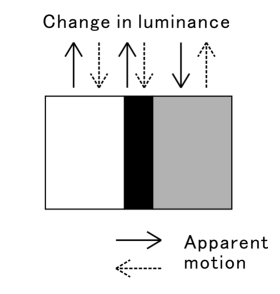


Kitaoka, A. (2006) Configurational coincidence
among six phenomena: A comment on van Lier and Csatho (2006). Perception,
35, 799-806. ![]() animations
animations
| Type | Basic illusion that motion direction is from dark to light |
Basic illusion that motion direction is from light to dark |
Examples (click the thumbnail) |
| IIb |   |
  |
Some works of mine could not be attributed to Type I or II. Thus I made Type III just before
going to VSS2007.
could not be attributed to Type I or II. Thus I made Type III just before
going to VSS2007.
Kitaoka, A. (2007) Phenomenal classification of the optimized Fraser-Wilcox illusion and the effect of color. Poster presentation in DemoNight,VSS2007, GWiz, Sarasota, Florida, USA, May 14, 2007.

"Receding color"
Each of the round-cornered, illusory square appears to contract.
Copyright
A.Kitaoka 2004 (June 11)
| Type | Basic illusion that motion direction is from dark to light |
Basic illusion that motion direction is from light to dark |
Examples (click the thumbnail) |
| III |   |
  |
Recently (August, 2008), I  realized a strong motion illusion when an image is changed to give a 3D
impression using the "plastic" effector equipped in Corel PhotoPaint
X3.
realized a strong motion illusion when an image is changed to give a 3D
impression using the "plastic" effector equipped in Corel PhotoPaint
X3.

Scintillating grid illusion
Schrauf, M., Lingelbach, B., Wist, E.R. (1997) The scintillating grid illusion. Vision Research, 37, 1033-1038.
![]()
3D-like scintillating grid illusion
Copyright Akiyoshi Kitaoka 2008 (August 22)
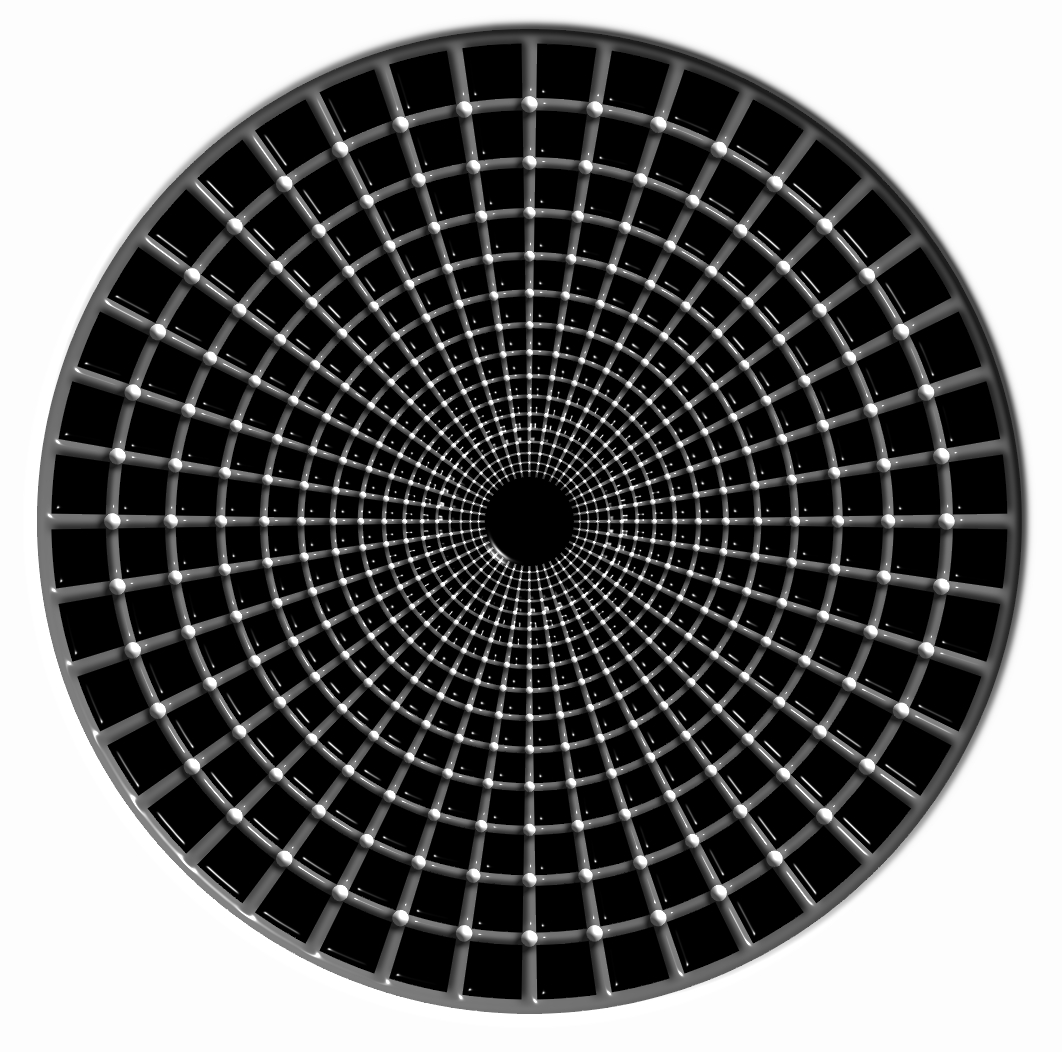
"The music in
the space"
Illusory black dots abruptly appear or disappear in white grains when we see the figure freely (= scintillation grid illusion*1). On the other hand, the white grains disappear when we fixate at the center (= extinction illusion*2,*3).
Copyright Akiyoshi Kitaoka 2008 (August 16)
*1For the scintillation grid illusion, see:
Schrauf, M., Lingelbach, B., Lingelbach, E., Wist, E.R. (1995) The Hermann grid and the scintillation effect. Perception, 24, suppl. 88-89
--- It should be noted that actually the third author Elke Lingelbach discovered the effect.
Schrauf, M., Lingelbach, B., Wist, E.R. (1997) The scintillating grid illusion. Vision Research, 37, 1033-1038.
Institut fur Augenoptik Aalen --- Click "Tauschungen" (illusions).
*2For the vanishing disk illusion, see:
McAnany, J. J., & Levine, M. W. (2002). The vanishing disk; a revealing quirk of the scintillating grid illusion [Abstract]. Journal of Vision, 2(7), 204a, http://journalofvision.org/2/7/204/, DOI 10.1167/2.7.204
*3For the vanishing disk illusion, I think that Ninio and Stevens's paper might be the first report:
Ninio, J. & Stevens, K. A. (2000). Variations on the Hermann grid: an extinction illusion. Perception, 29, 1209-1217.
<I thank Bernd for giving me beautiful panels and information>
*4For the vanishing disk illusion, they published the paper in Vision Research, where they called this phenomenon "blanking": new ! <June 16, 2004>
McAnany, J. J., & Levine, M. W. (2004). The blanking phenomenon: a novel form of visual disappearance. Vision Research, 44, 993-1001.

"Chrysanthemum
and sunshine"
The center appears to shine.
Copyright Akiyoshi Kitaoka 2008 (August 14)
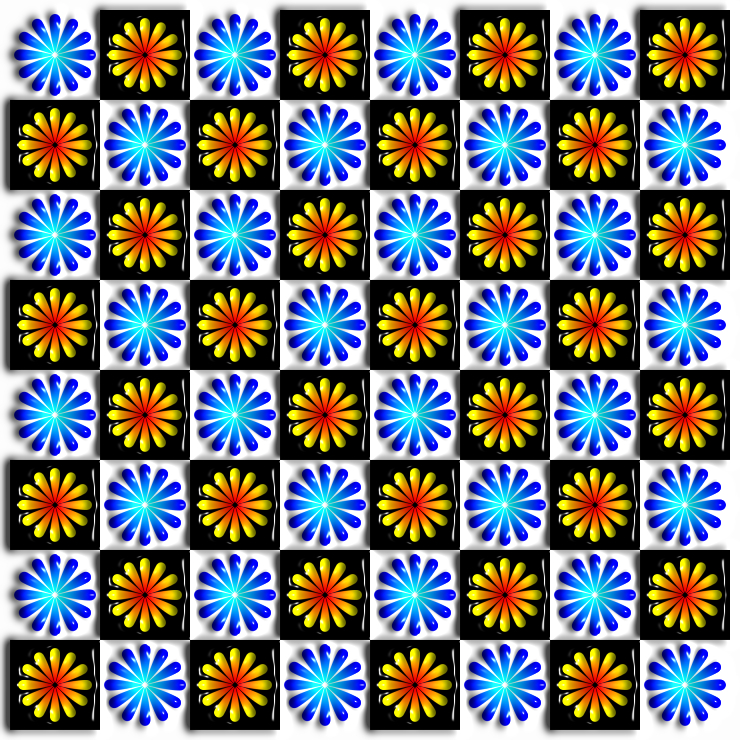
"Ceramic
checkerboard of flowers"
The image appears to scintillate. Illusory orange appears to be induced in the center of each blue flower while illusory blue appears to be seen in the center of each orange flower.
Copyright Akiyoshi Kitaoka 2008 (August 16)
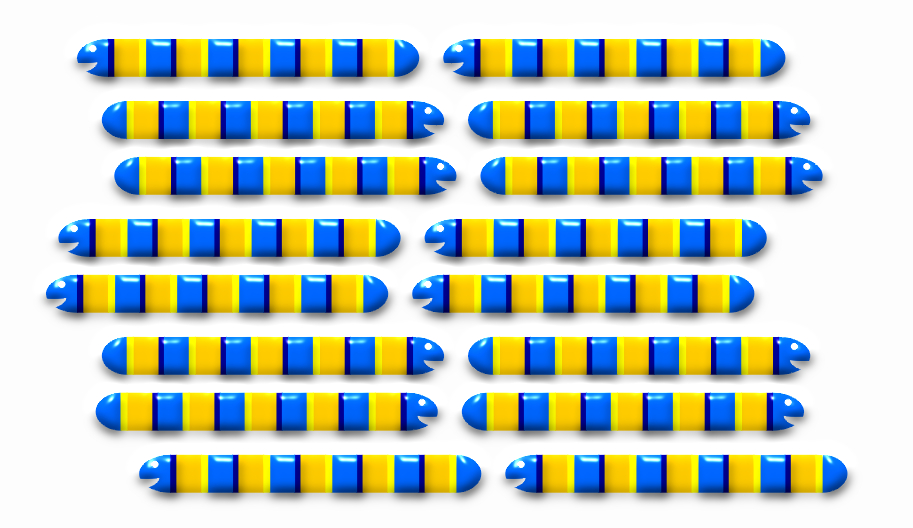
"Realistic
mushi-kun"*
*Mushi-kun = Mr. Worm
Each row of worms appears to move horizontally.
Copyright Akiyoshi Kitaoka 2008 (August 29)
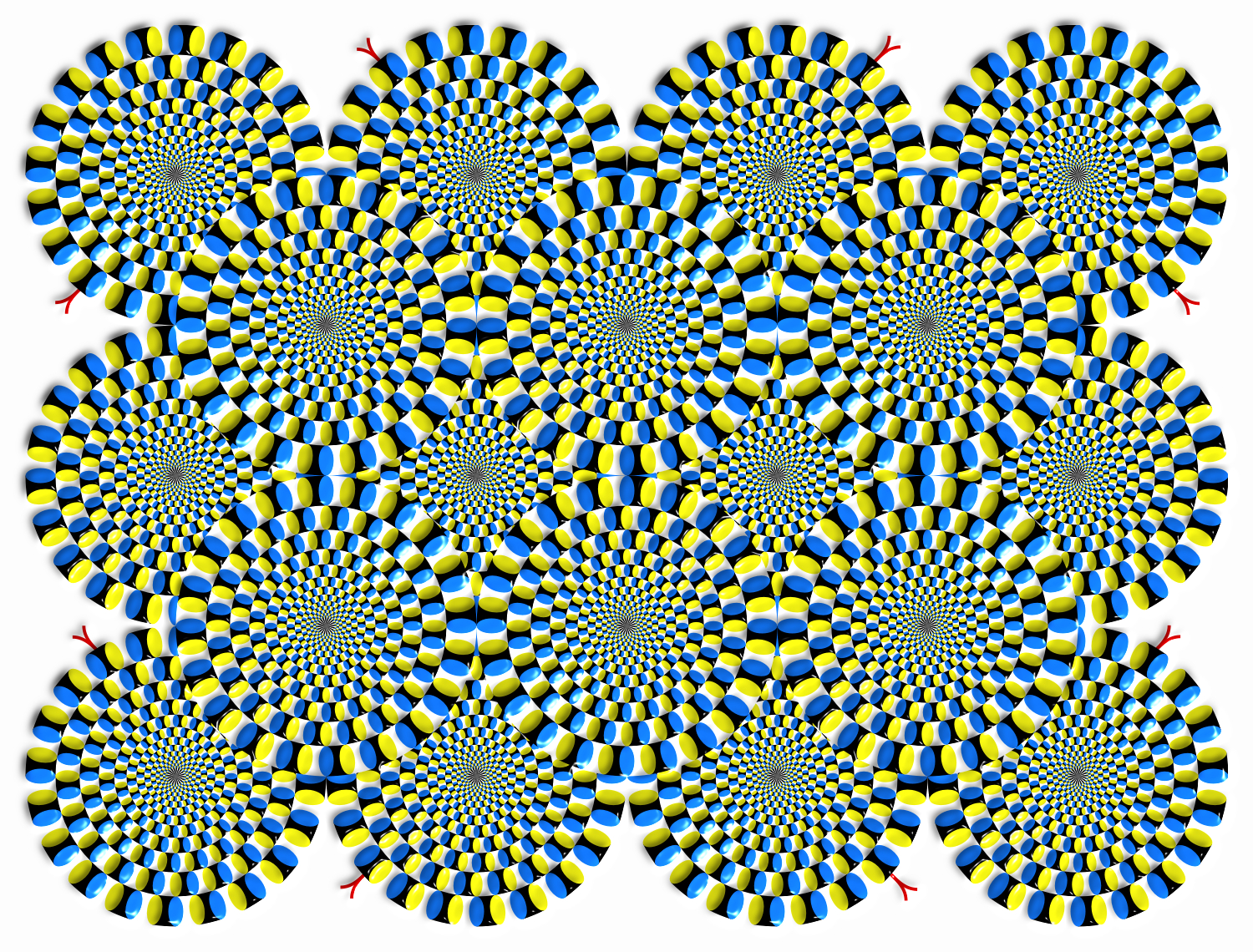
"Plastic
rotating snakes"
Each disk appears to rotate.
Copyright Akiyoshi Kitaoka 2008 (August 13)
"Red glass snake"
The snake appears to move.
Copyright Akiyoshi Kitaoka 2008 (August 14)
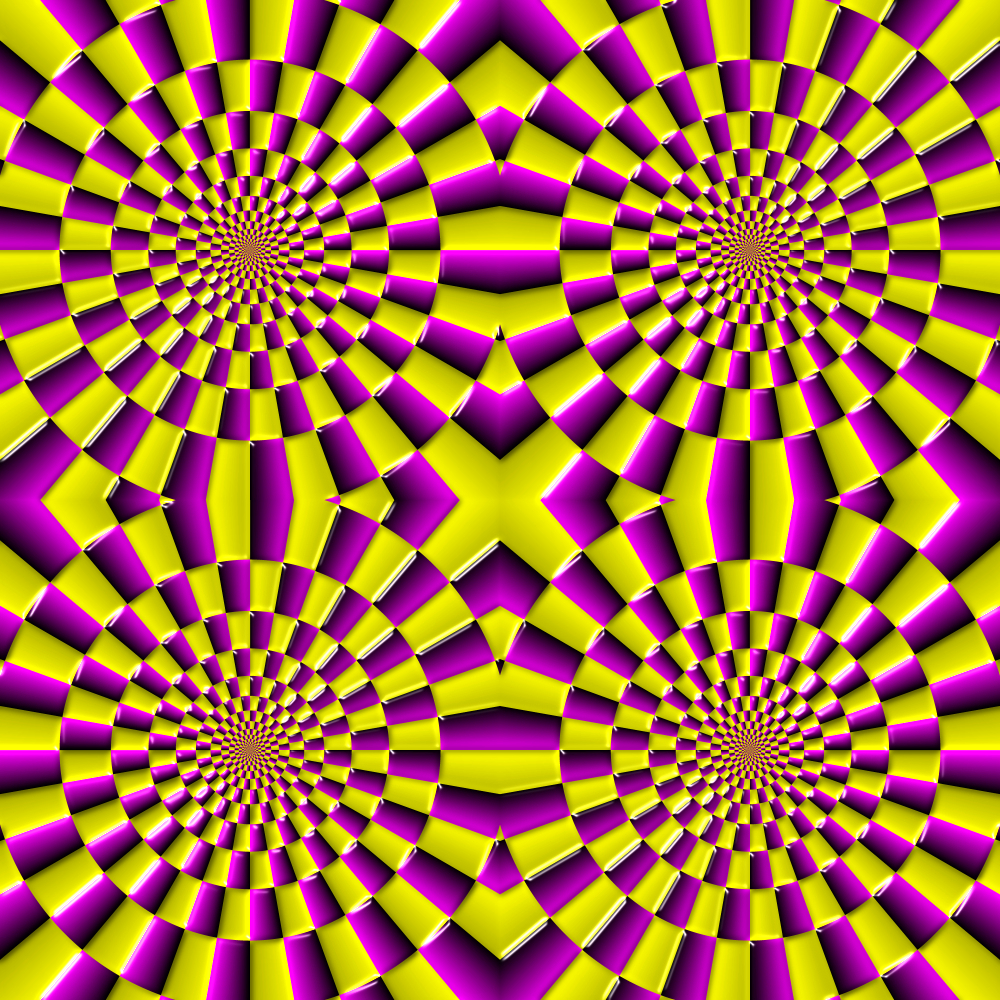
"Ceramic time
tunnel"
Tunnels appear to rotate.
Copyright Akiyoshi Kitaoka 2008 (August 14)
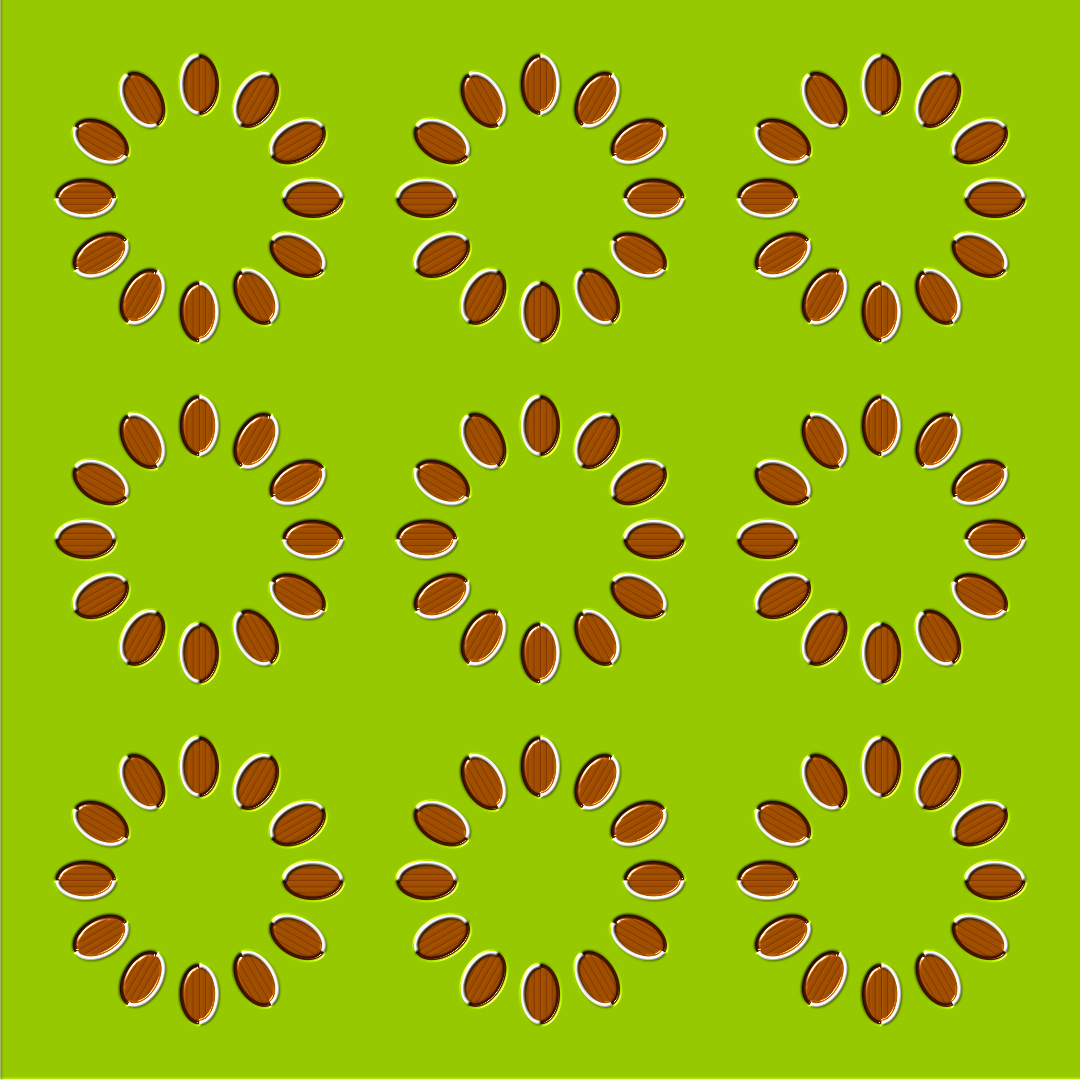
"Plastic Dongururin"*
*Rotation of donguri (acorns). "Gururin" means rotation.
Rings of donguri appear to rotate.
Copyright Akiyoshi Kitaoka 2008 (August 13)
"Planet of the
Snakes made from glass"
"Planets" appear to rotate.
Copyright Akiyoshi Kitaoka 2008 (August 14)
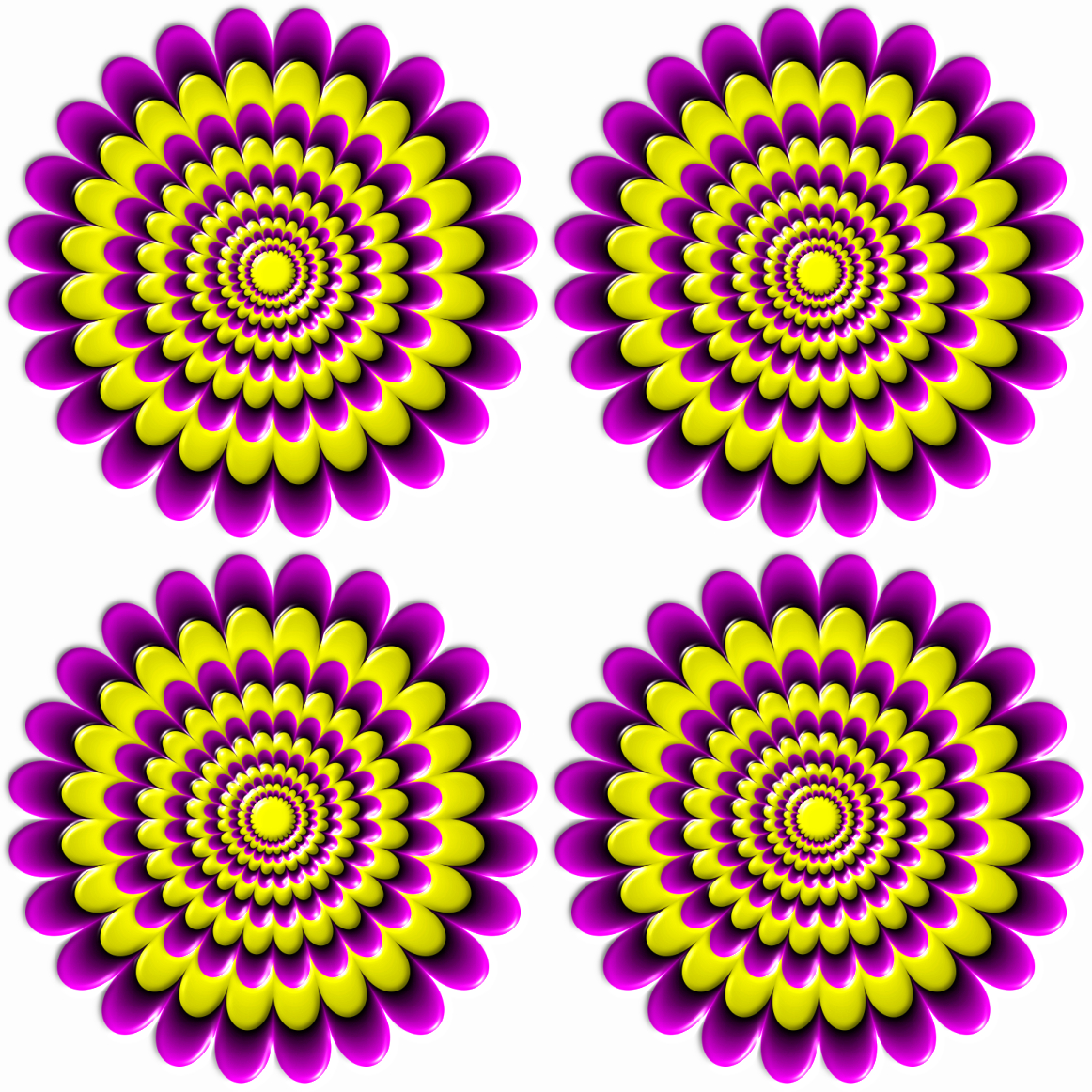
"Blooming glass flowers"
Flowers appear to expand.
Copyright Akiyoshi Kitaoka 2008 (August 14)
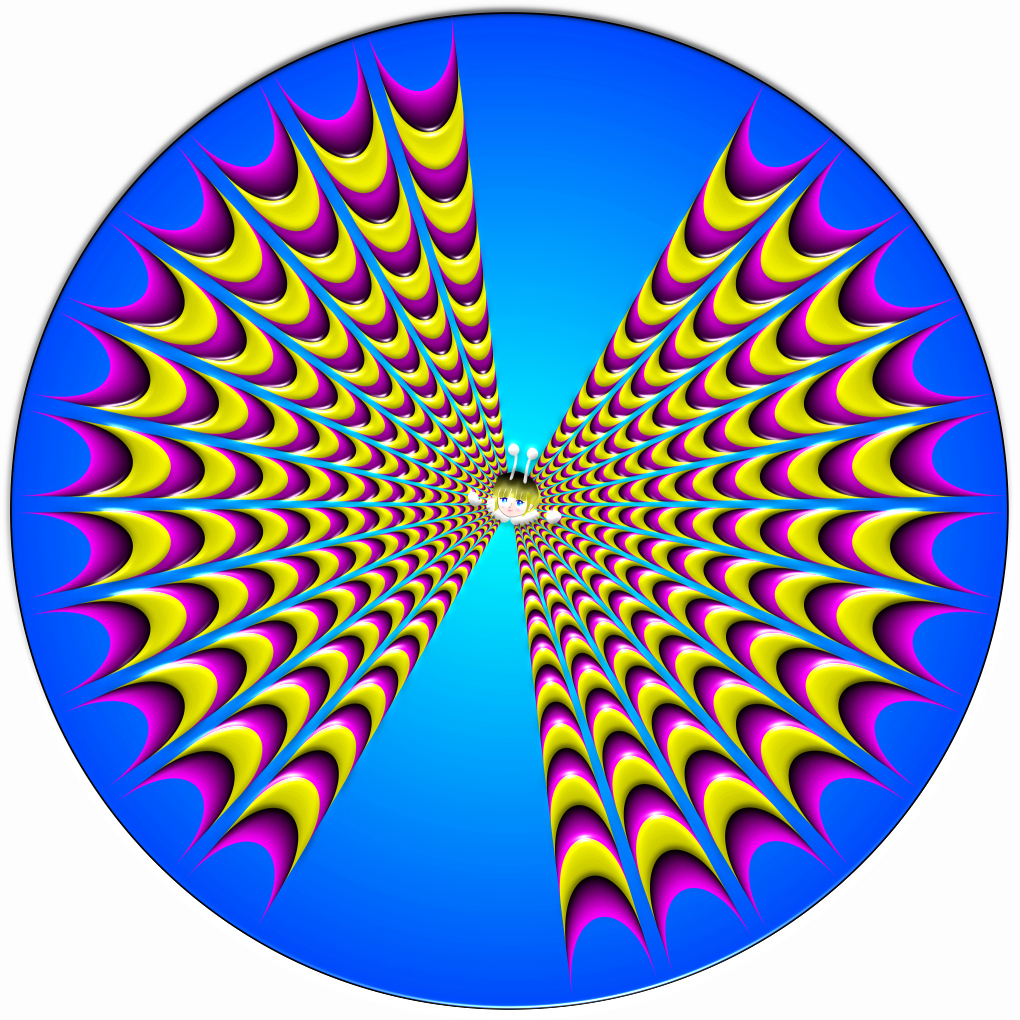
"plastic
btterfly"
The image appears to expand slowly.
Copyright Akiyoshi Kitaoka 2008 (August 14)
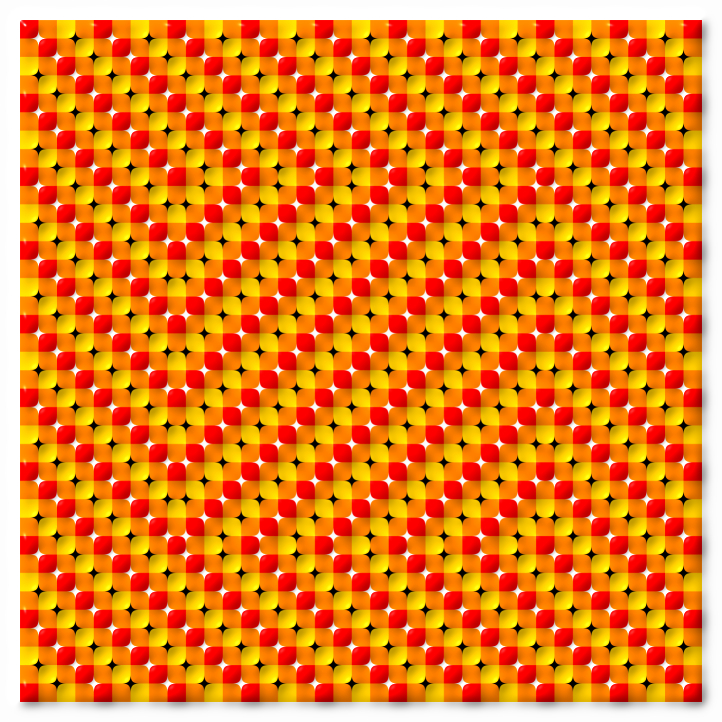
"Plastic autumn color swamp"
The inset appears to move.
Copyright Akiyoshi Kitaoka 2008 (August 13)
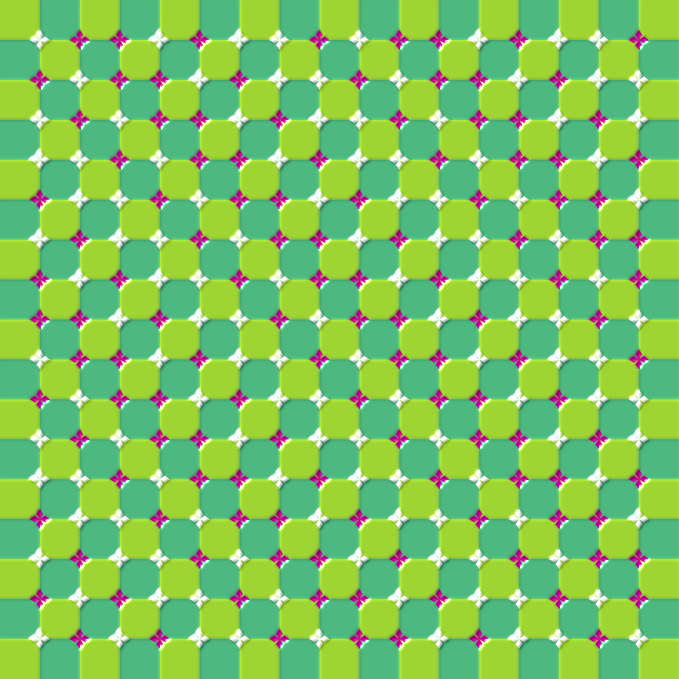
This checkered background consists of squares but appears to wave. In addition, this figure also shows a waving motion illusion.
Copyright Akiyoshi Kitaoka 2008 (August 13)
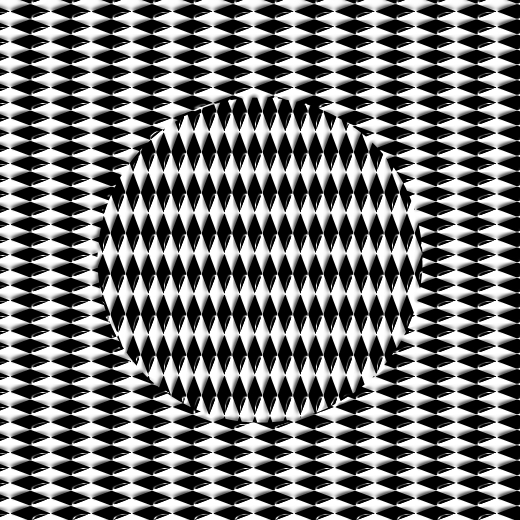
"Plastic version
of the diamond Ouchi illusion"
The inset appears to move.
Copyright Akiyoshi Kitaoka 2008 (August 14)
"Realistic obake"*
*Obake = phantom
The clothes of the left phantom appears to be lighter than those of the right one, though they are the same luminance.
Copyright Akiyoshi Kitaoka 2008 (August 14)
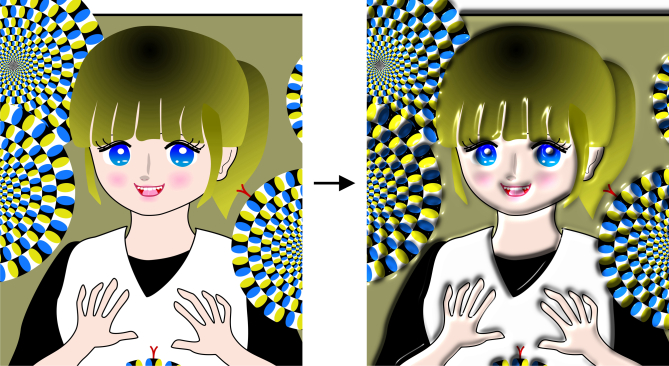
This effector makes a manga face fall into the uncanny valley.
"Bean wave"
The image appears to wave.
Copyright Akiyoshi Kitaoka 2008 (June 17)
![]()
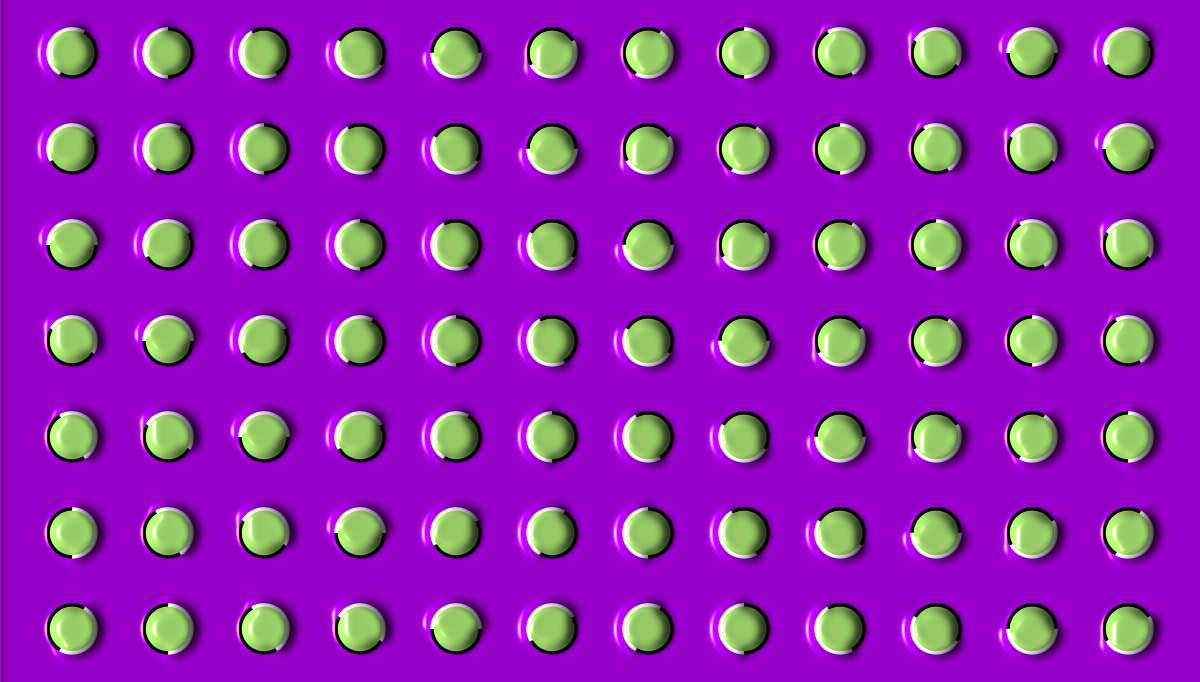
"Beans"
Beans appears to move rightward.
Copyright Akiyoshi Kitaoka 2008 (August 14)
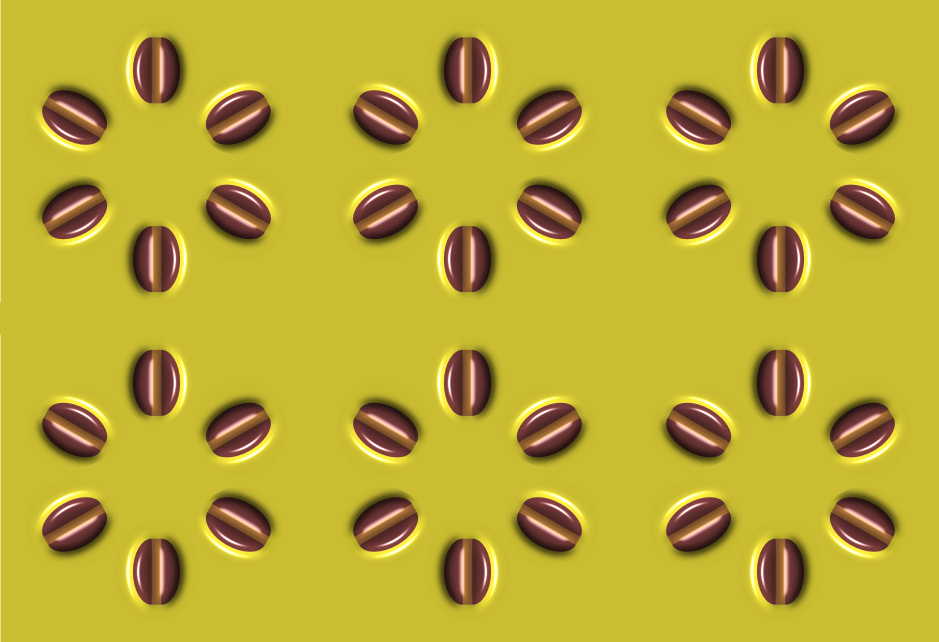
"Rotating coffee
beans"
Each ring appears to rotate.
Copyright Akiyoshi Kitaoka 2008 (August 27)

"3D Forum 2008"
Rings appear to rotate.
Copyright Akiyoshi Kitaoka 2008 (November 18)
Illusory signs
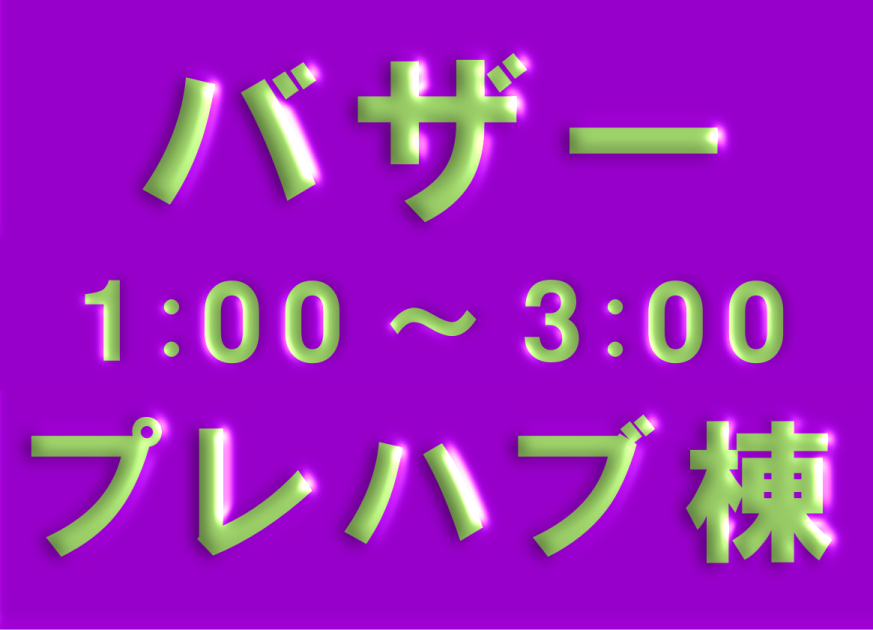
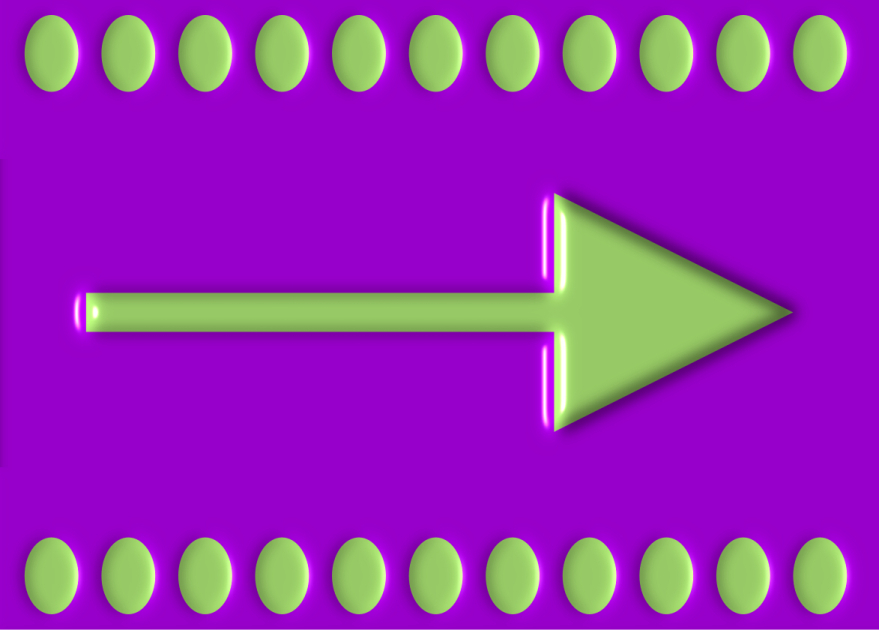
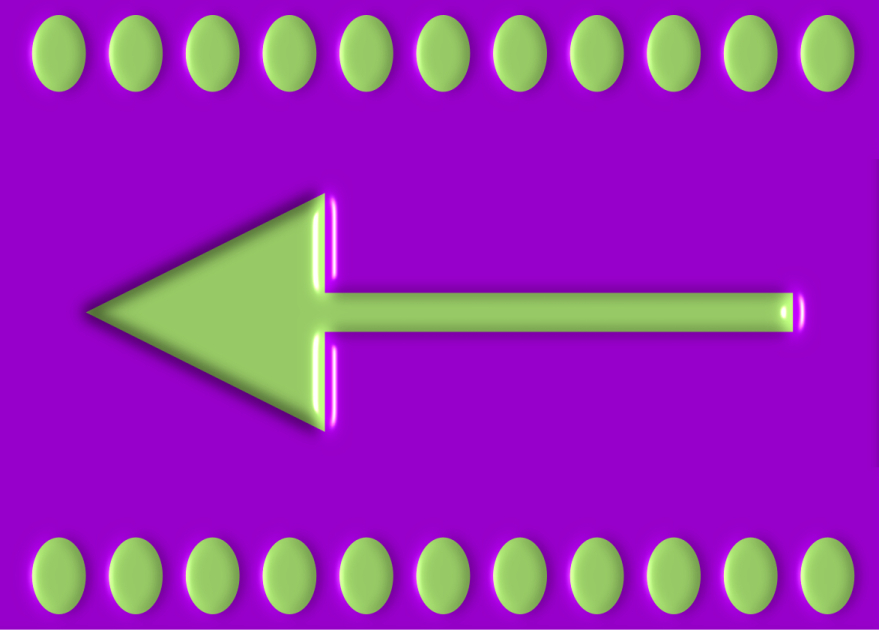
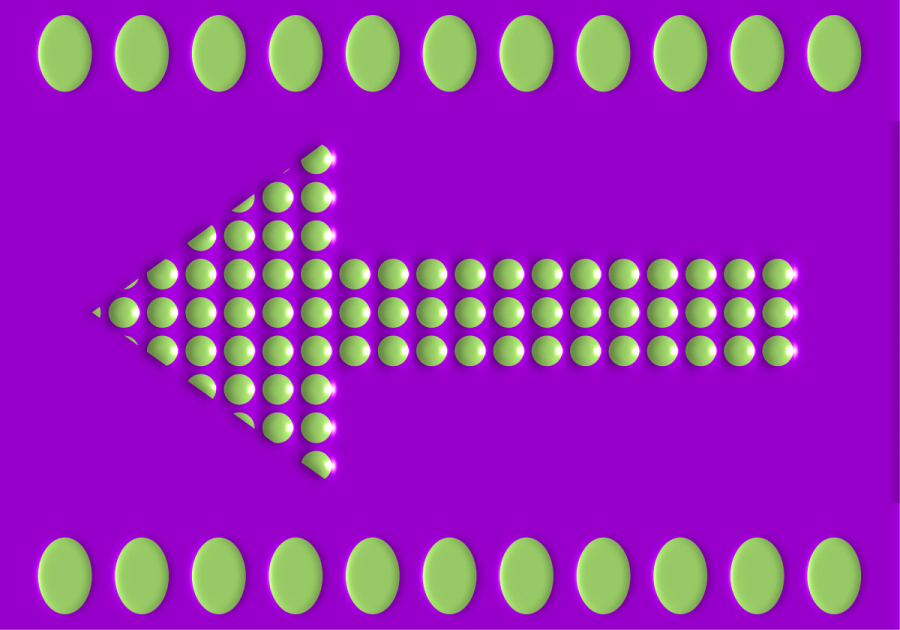
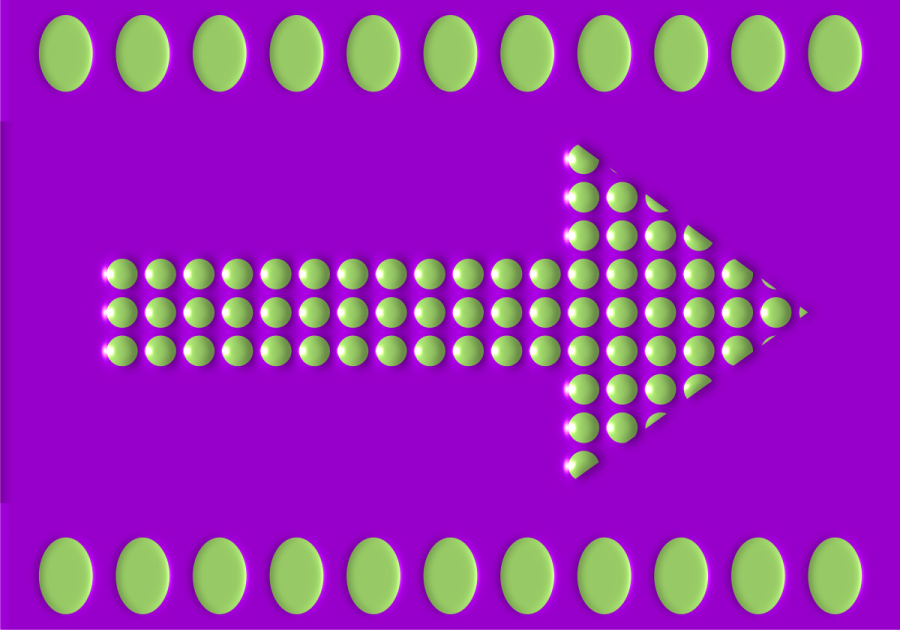
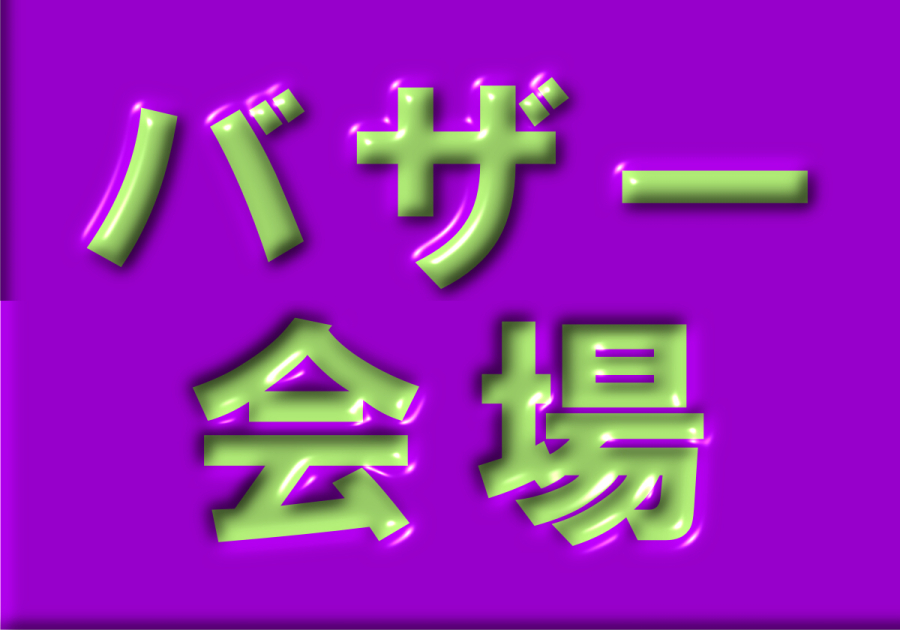
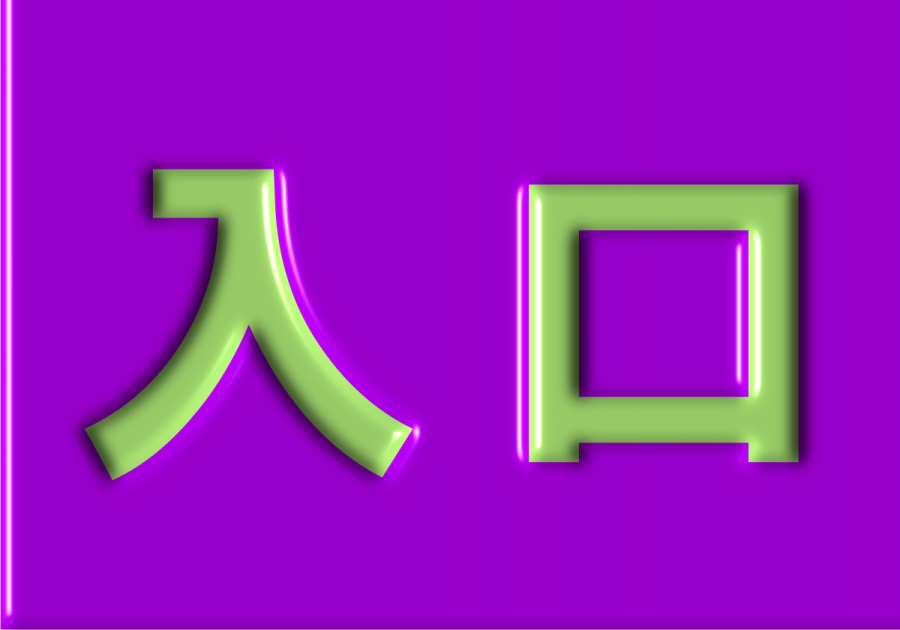
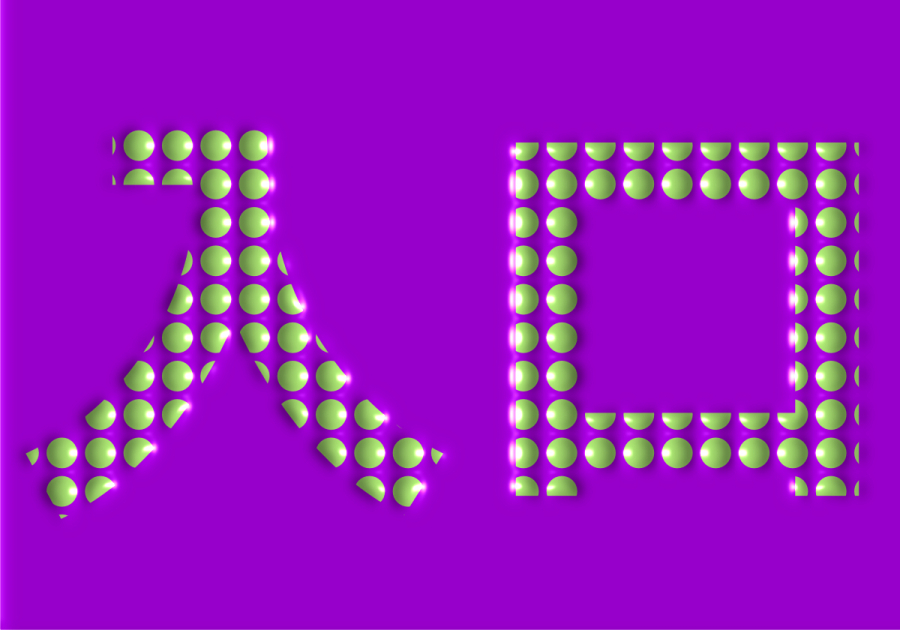

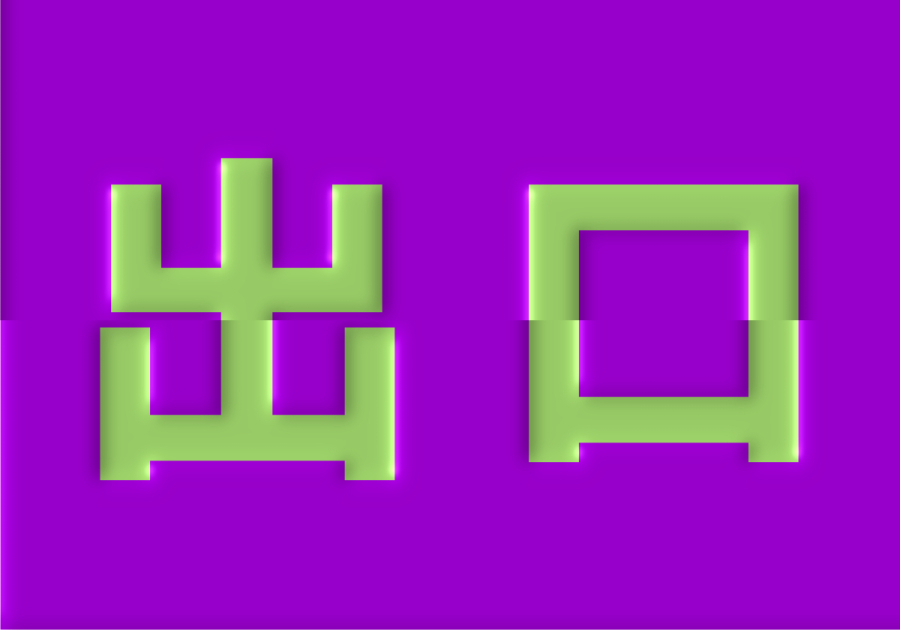
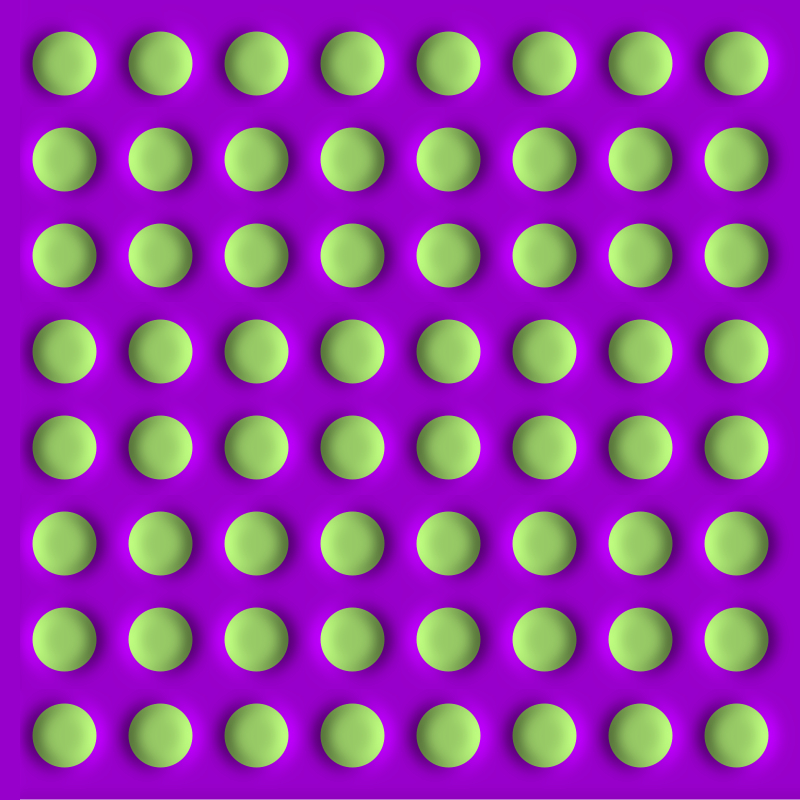
"Mobeang"
Beans appear to be moving laterally.
Copyright Akiyoshi Kitaoka 2008 (September 12)
| Type | Basic illusion that motion direction is from dark to light |
Basic illusion that motion direction is from light to dark |
Examples (click the thumbnail) |
| IV new! |
  |
  |
 |
Convex and concave

In the inner area, purple squares appear to be convex more frequently than green ones.
Upside down

In the inner area, green squares appear to be convex more frequently than purple ones.
Effect of highlight

In the inner area, purple squares appear to be convex more frequently than green ones.
Upside down

In the inner area, green squares appear to be convex more frequently than purple ones, though the latter appears to be convex sometimes.

Mirror image

cf.

Crator illusion family
Ramachandran's "Shape from shading"
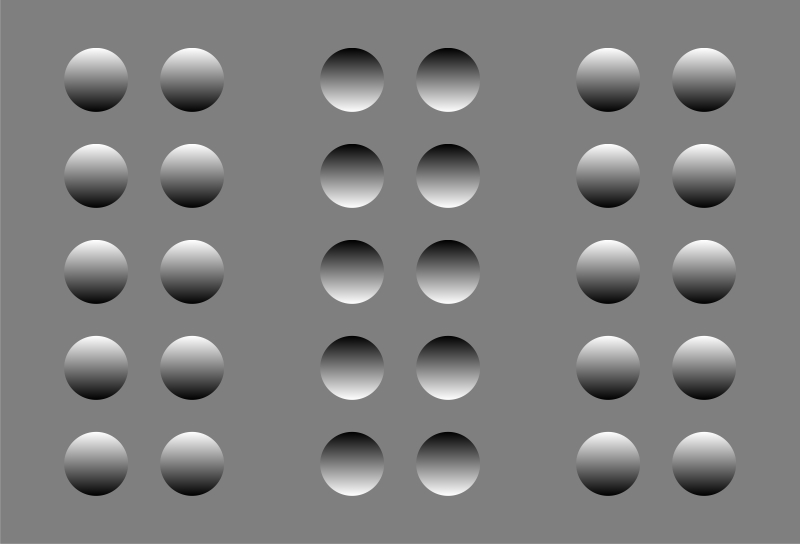
Bevel
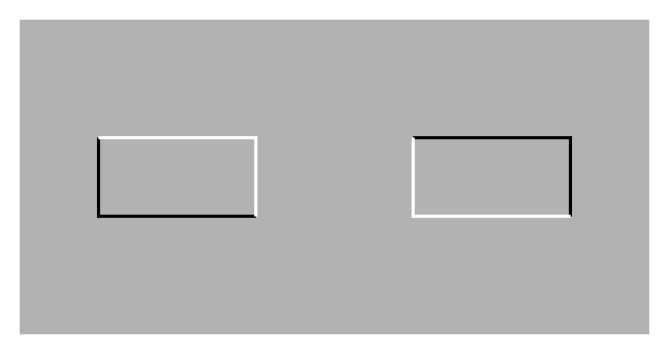
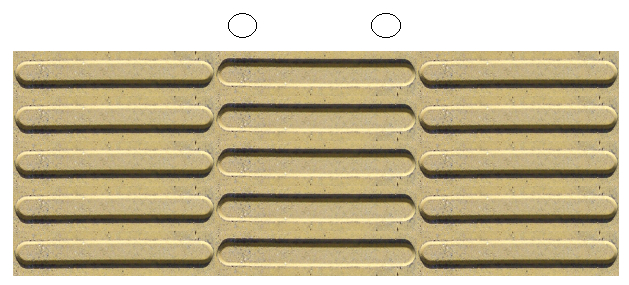
"A crab"
Objects are all convex but half of them appear to be concave (the crater illusion).
Copyright A.Kitaoka 2003 (December 8)
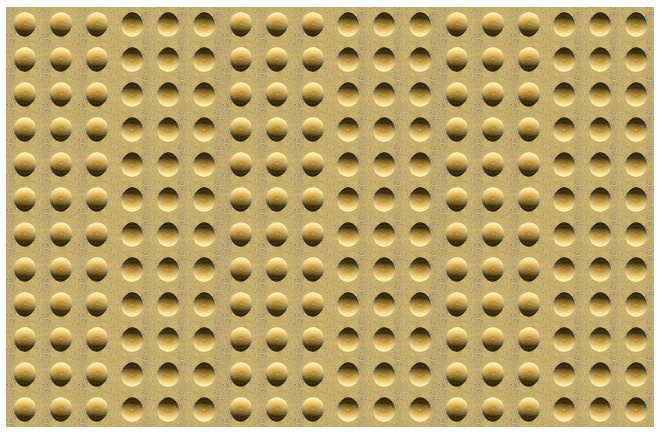
"Motion of textured paving blocks"
Objects are all convex but half of them appear to be concave (the crater illusion).
Copyright A.Kitaoka 2003 (December 8)
"Shape from shading" vs.
"optimized Fraser-Wilcox illusion Type IV"

vs.
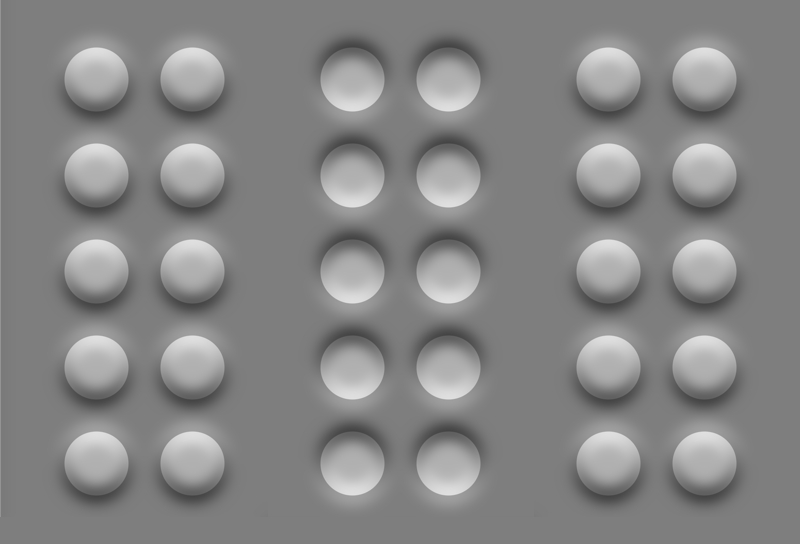
There are shadows outside the circles, too.





An image corresponding to "Shape from shading"
or kind of Fraser-Wilcox illusion image

There are two directions of illusory motion opposite to each other.


cf. Central drift illusion
(Kitaoka and Ashida, 2004)
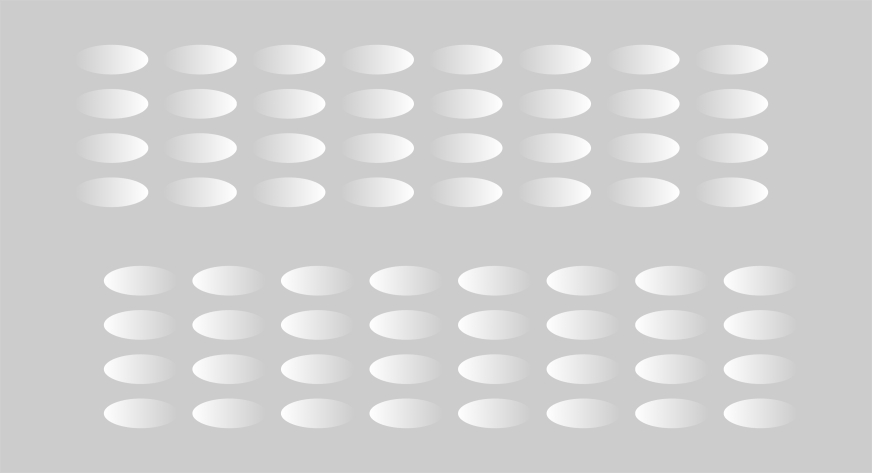
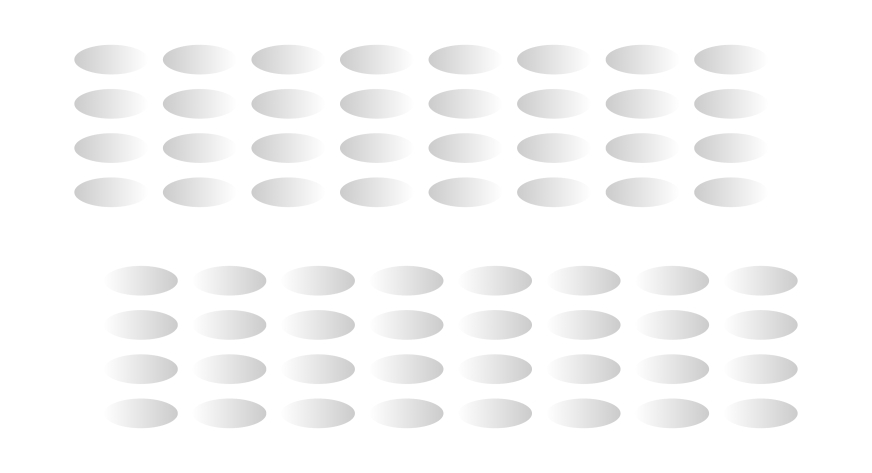
Double convex

Dark areas tend to appear to be concave?

?

"Craik-O'Brien-Cornsweet effect-dependent radiation perspective and an angel"
There are six pie slices; three of them appear to be darker than the rest, though they are the same in luminance except around their borders.
Copyright Akiyoshi Kitaoka 2008 (October 21)

Craik-O'Brien-Cornsweet effect: There appear two dark columns
in front of the light background, though they are the same in luminance except
around their contours.
(Cornsweet, 1970; Craik, 1966; O'Brien, 1958)
Cornsweet, T. (1970) Visual Perception. New York: Academic Press.
Craik, K. J. W. (1966) The Nature of Psychology: a Selection of Papers, Essays and Other Writings. Cambridge, UK: Cambridge University Press.
O'Brien, V. (1958) Contour perception, illusion and reality. Journal of the Optical Society of America, 48, 112-119.
Professor Mark McCourt's talk
 in Ritsumeikan
in Ritsumeikan 
Professor Mark McCourt visiting Japan this December will stop by Kyoto and give us talk in the Ritsumeikan University!
Date/time: December 8, 2008 (Monday) starting 15:45
Location: Ritsumeikan University (Kinugasa campus, Kyoto)
Soshikan Conference room, 1F (Also see the map shown below)
Registration or fee: Admission free
Supported by: Grant-in-Aid for Scientific Research awarded from JSPS (No. 18330151)
Contact to: Akiyoshi KITAOKA (Department of Psychology, Ritsumeikan University)
Jinshin-kan Hall 1F rm.718
+81-75-466-3402 / ext.3718
akitaoka@lt.ritsumei.ac.jp
http://www.ritsumei.ac.jp/~akitaoka/index-e.html
Schedule
Opening talk (15:45-16:30)
Hiroyuki Shinoda, Professor Ph.D (Ritsumeikan University, Department of Human & Computer Intelligence)
"Evaluation of Lighting Environments with Perceived Brightness"
Akiyoshi Kitaoka, Professor Ph.D (Ritsumeikan University, Department of Psychology)
"An Overview of Illusions of Brightness"
Professor McCourt's talk (16:30-)
Mark McCourt, Professor Ph.D (North Dakota State University, Department of Psychology)
"The Computation of Brightness in Human Vision"
Discussion ( - about 17:45)
Party

The 86th meeting of the 3D Furum
The University of Electro-Communications, Tokyo, Japan
November 22, 2008
Program of the meeting (in Japanese)